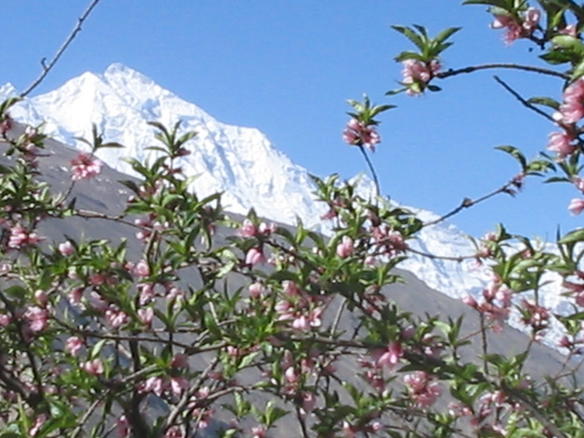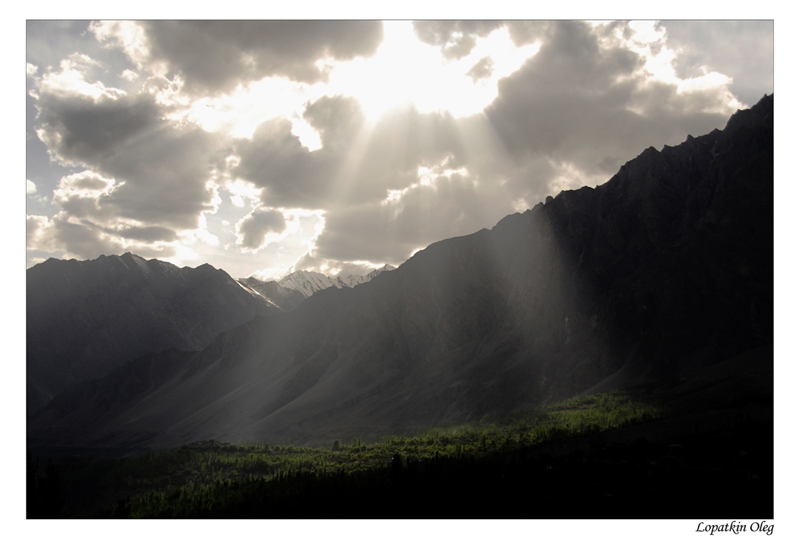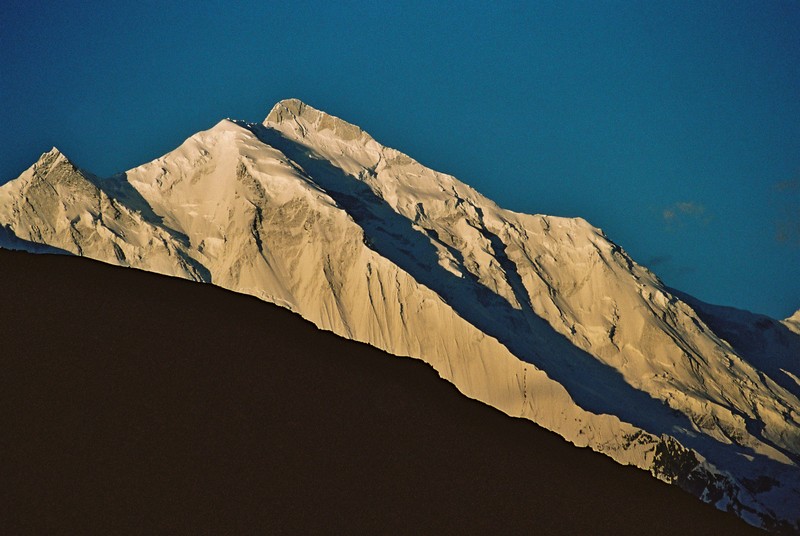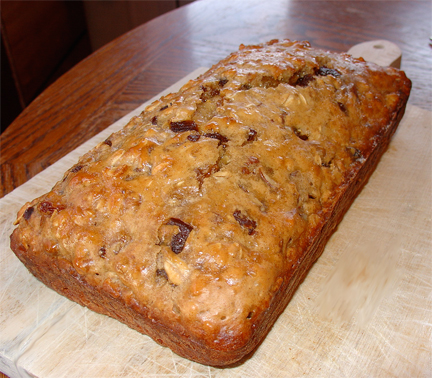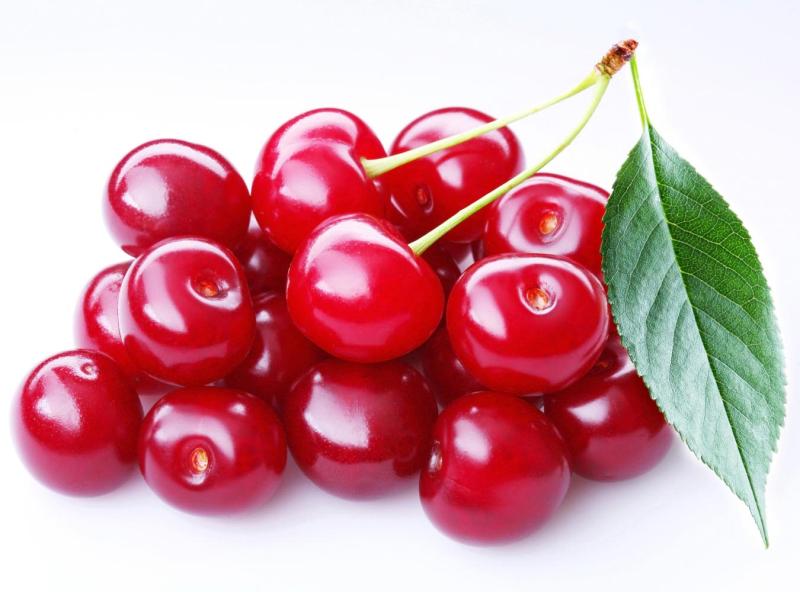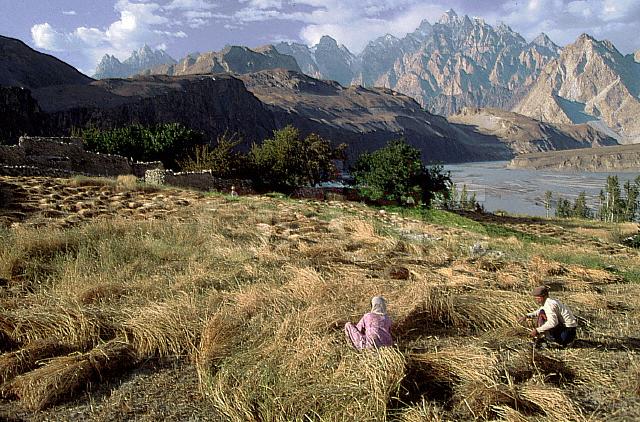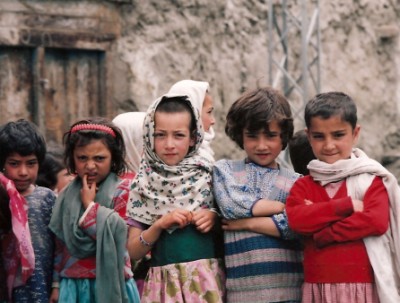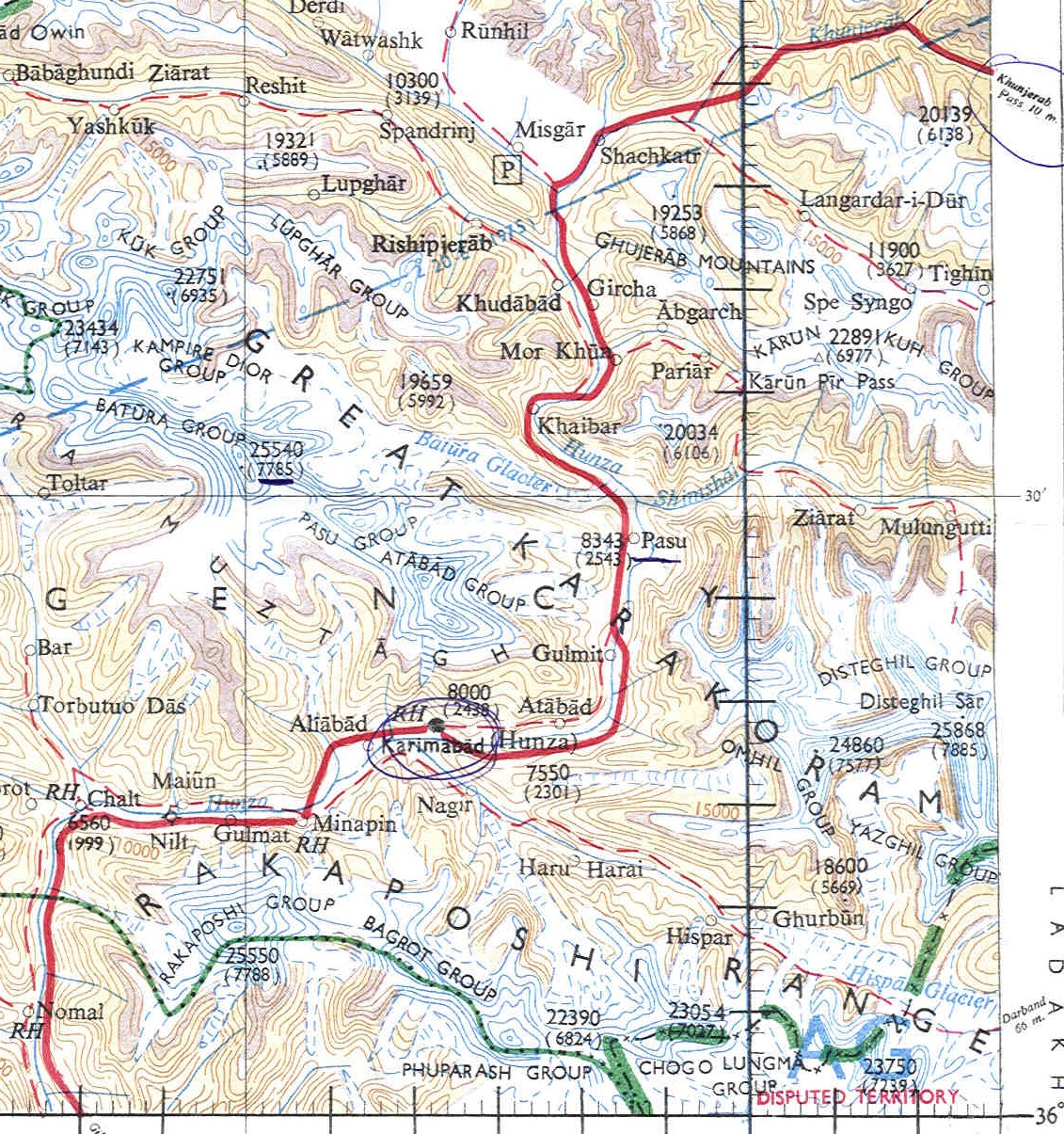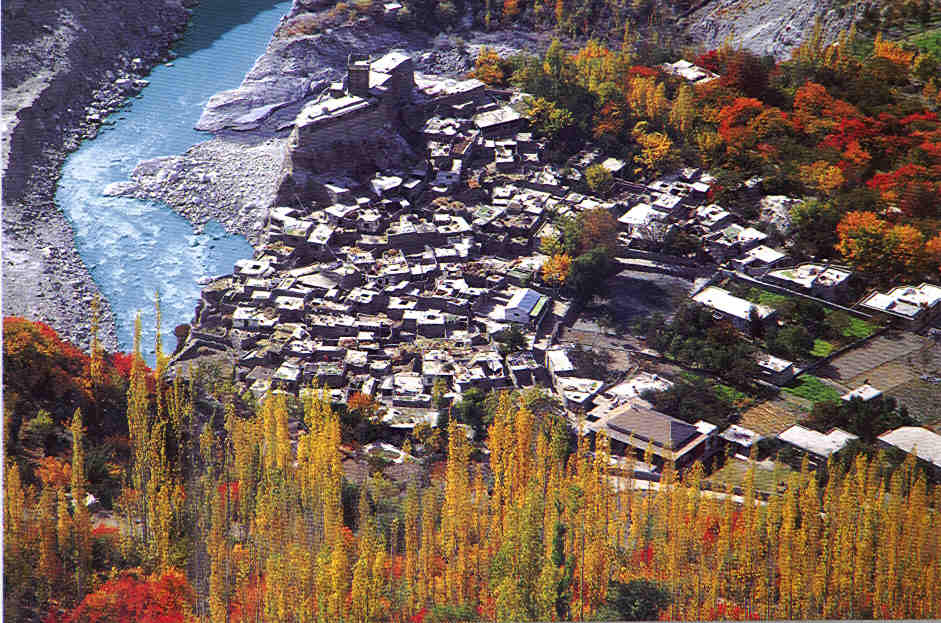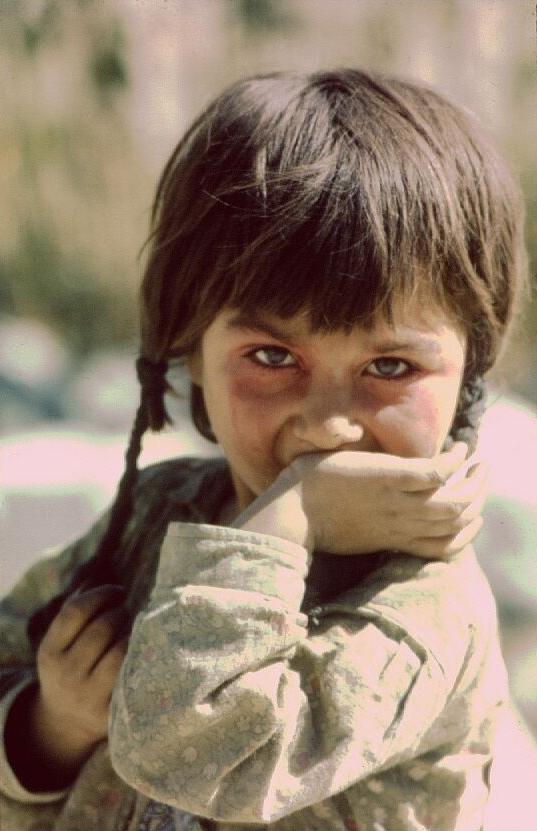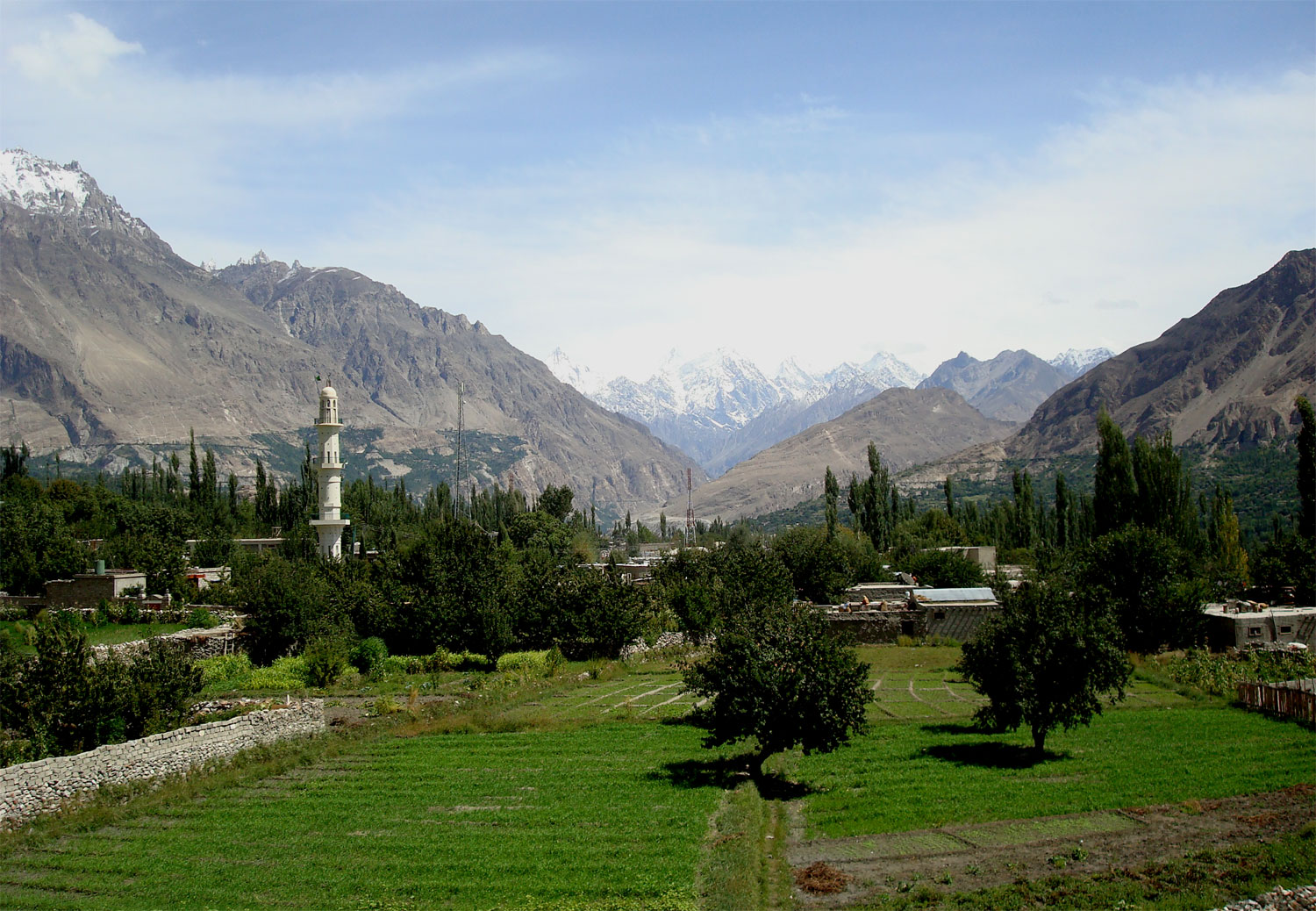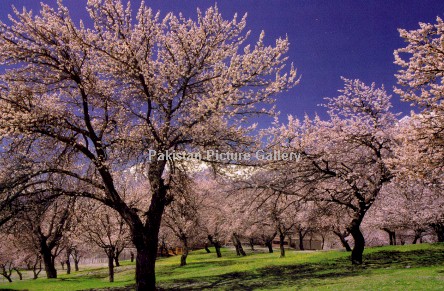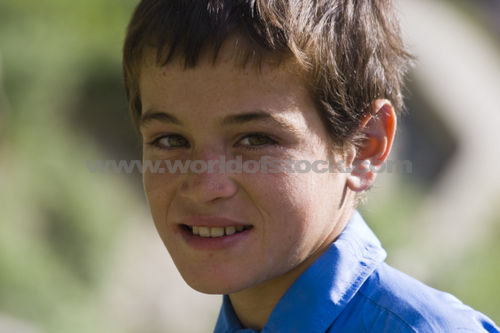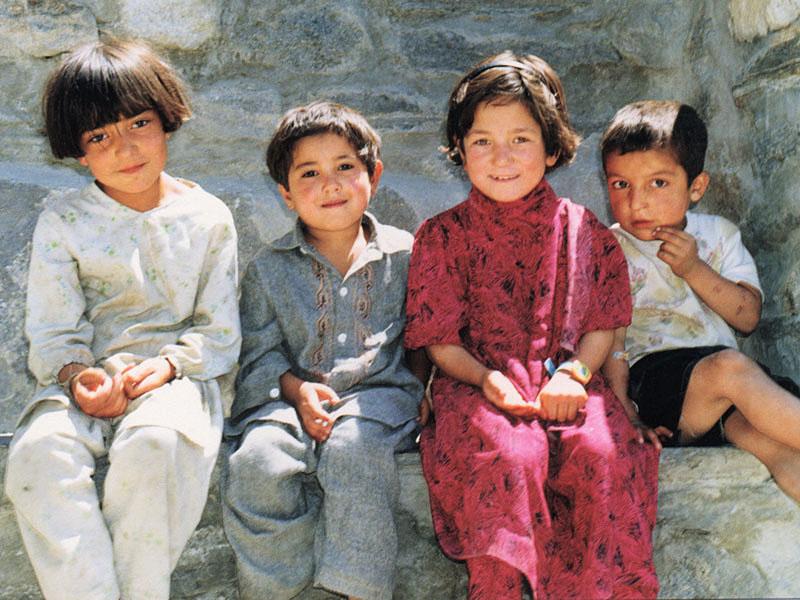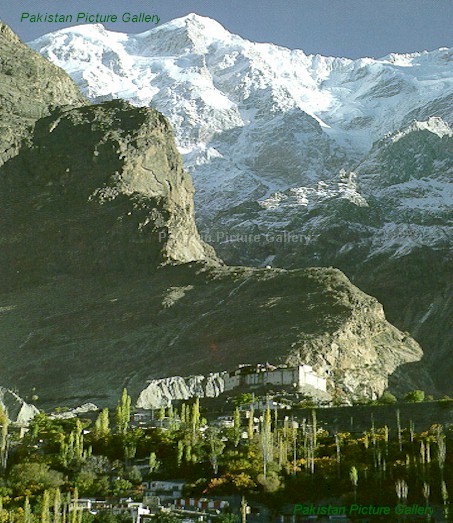Dziewczynka z ludu Hunzów
Hunzowie – Skołoto-Słowianie (czyli Scyto-Słowianie) z Himalajów
Fragment z dyskusji na forum histmag.org: http://forum.histmag.org/index.php?topic=8836.5;wap2
„…
Elkate:
Ciekawostka Indoeuropoejczyków!
Czy wiecie, że to szczęśliwe małżeństwo które dożyło 103 (ona) i 106 (on) lat w plemieniu Hunza (wczoraj zmarła ona), to genetycznie najprawdopodobniej R1a1a?
Dolina rzeki Hunza (na ciasnym międzygórskim przejsciu między Pakistanem a Indiami), w której podobno znajduje się światowe centrum długowieczności,
http://www.google.pl/imgres?imgurl=http://blog.daylife.com/wp-content/uploads/2007/07/hunza2.jpg&imgrefurl=http://blog.daylife.com/%3Fp%3D275&h=407&w=610&sz=62&tbnid=HxPUZPhib11dSM:&tbnh=91&tbnw=136&prev=/images%3Fq%3DHunza&hl=pl&usg=__m5iOCGKJuUplCuHtJeQss
_0AoNE=&ei=UiINS9rNOoemmAOUxJzcBQ&sa=X&oi=image_result&resnum=8&ct=image&ved=0CBsQ9QEwBw
http://www.idn.org.pl/Gdansk/ptsr/Html/24-Hunz.htm
zaludniona jest w około 70% przez ludność populacji R1a1a.
Brawo nasi! Tak trzymać!
Viraj:
Tak, Hunza to w dużej części R1a1 przybyłe z Europy. Co ciekawe, wśród nich ciągle spotyka się ludzi o jasnej, europejskiej pigmentacji i europejskich rysach twarzy. Kiedyś nawet myślano, że Hunza to potomkowie Macedończyków, którzy przybyli do Afganistanu z Aleksandrem Wielkim. Ale badania genetyczne to wykluczyły. Pod względem genetycznym większe jest ich podobieństwo do wschodnich Europejczyków.
 Dorosła dziewczyna Hunza – ewidentnie R1a1 (skóra biała, oczy zielone, ostry podbródek)
Dorosła dziewczyna Hunza – ewidentnie R1a1 (skóra biała, oczy zielone, ostry podbródek)
Tajemnice zdrowia plemienia Hunzów
Irena Abramska
Czytam właśnie książkę Amerykanki Renee Taylor o Hunzach.
Książka jest dosyć kiepsko napisana i w sposób szkolny przetłumaczona, mimo to jednak trwam przy niej, bo temat jest arcyciekawy.
 Inne dziewczynki Hunza, ciemnowłose lecz Indoeuropejskie, Księstwo Hunza dzisiaj należy do Pakistanu.
Inne dziewczynki Hunza, ciemnowłose lecz Indoeuropejskie, Księstwo Hunza dzisiaj należy do Pakistanu.
O plemieniu Hunzów, ich stylu życia, sposobie odżywiania i długowieczności od lat krążą legendy. Spotykałam już artykuły na ten temat, ale książkę widzę pierwszy raz.
Kraina Hunza leży w Himalajach. Teraz stanowi część wschodniego Pakistanu, ale działa jako samodzielne państwo z królem na tronie.
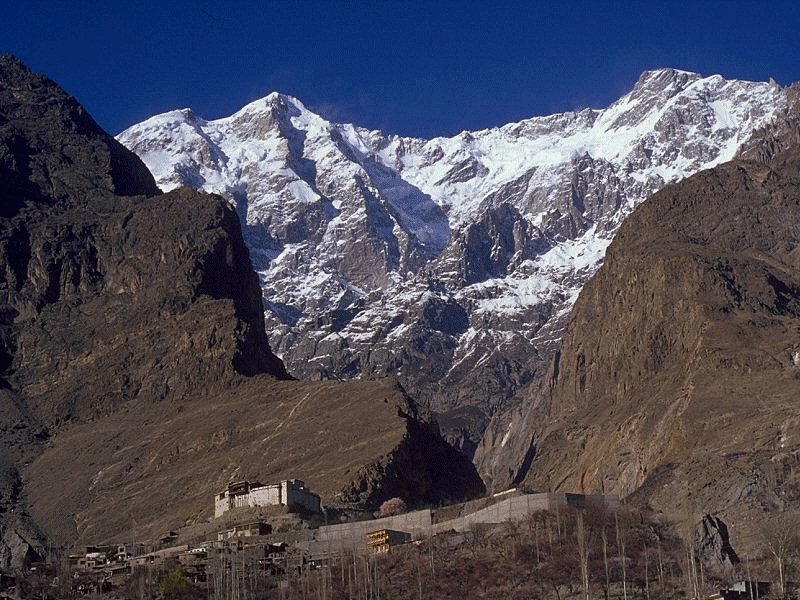 Góra Ułtar – jedna z górujących nad Doliną. Czy Ułtar to mogłoby kiedys, dawno dawno, gdy mówili jeszcze językiem bardzo podobnym do naszego znaczyć Ołtarz (Góra Ołtarza, Święta, Ofiarna)?
Góra Ułtar – jedna z górujących nad Doliną. Czy Ułtar to mogłoby kiedys, dawno dawno, gdy mówili jeszcze językiem bardzo podobnym do naszego znaczyć Ołtarz (Góra Ołtarza, Święta, Ofiarna)?
Jest to malutka monarchia zajmująca w niedostępnych górach dolinę 160 km długości i 1600m szerokości.
Dostać się tam jest szalenie trudno. Generalnie nie ma wstępu dla odwiedzających.
Potrzebne jest specjalne zezwolenie władz pakistańskich oraz imienne zaproszenie króla Hunzów.
 Wyniosła i piękna Góra Rakaposzi. Dolina Hunza leży w sąsiedztwie Krainy Lodu, na jej skraju w Karakorum. Dzisiaj ta kraina nazywa się Ladakh. Czy nie zwraca waszej uwagi pokrewieństwo nazwy tej góry do nazwy plemienia które kiedyś zasiedlało dzisiejszą Austrię i Alpy – Białe Góry Kauków, inaczej Biały Kaukaz? Nazwa tego plemienia brzmiała – Rakoszanie, a Czesi do dzisiaj nazywają tak Austrię i Austriaków – Rakousko.
Wyniosła i piękna Góra Rakaposzi. Dolina Hunza leży w sąsiedztwie Krainy Lodu, na jej skraju w Karakorum. Dzisiaj ta kraina nazywa się Ladakh. Czy nie zwraca waszej uwagi pokrewieństwo nazwy tej góry do nazwy plemienia które kiedyś zasiedlało dzisiejszą Austrię i Alpy – Białe Góry Kauków, inaczej Biały Kaukaz? Nazwa tego plemienia brzmiała – Rakoszanie, a Czesi do dzisiaj nazywają tak Austrię i Austriaków – Rakousko.
Sama wyprawa jest niezwykle karkołomna, ponieważ w dolinie nie lądują samoloty a przeprawa przez góry jest wręcz niebezpieczna.
Dlatego też historie opowiadane przez lekarzy i naukowców, którzy mieli szczęście odwiedzić Hunzę, malują obraz prawdziwego raju na Ziemi.
 To są dziewczynki Hunza, podczas pokazu mody w Londynie (pokazuję by zwrócić uwagę, że mogą mieć blond włosy)
To są dziewczynki Hunza, podczas pokazu mody w Londynie (pokazuję by zwrócić uwagę, że mogą mieć blond włosy)
Hunzowie dożywają w doskonałym stanie zdrowia fizycznego i umysłowego ponad stu lat.
Pracują aktywnie do końca swych dni, nie ma tam pojęcia emerytury a mężczyźni dziewięćdziesięcioletni zostają ojcami.
 Dolina i rzeka jesienią – Z lotu ptaka
Dolina i rzeka jesienią – Z lotu ptaka
Choroby zdarzają się tam niesłychanie rzadko. Rak, choroby serca, zawały, wrzody żołądka czy choroby dziecięce: odra, świnka, ospa wietrzna są tam właściwie nieznane.
Nie muszę chyba dodawać, że o SMie nikt nawet nie słyszał.
Czemu zawdzięczają Hunzowie tak niesłychanie korzystną sytuację zdrowotną?
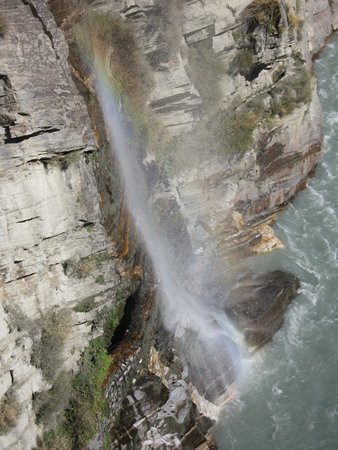 Widok z mostu nad górskim przełomem rzeki
Widok z mostu nad górskim przełomem rzeki
Dolina, w której żyją, jest całkowicie odcięta od świata. Nie ma tam przemysłu, samochodów, sklepów, a pieniędzy się prawie nie używa.
Większość ludzi zajmuje się rolnictwem.
Ziemia daje obfite plony, chociaż nie stosuje się nawozów sztucznych ani oprysków roślin. Powietrze jest kryształowo czyste a gleba daje wodę zasobną w związki mineralne.
Hunzowie nie są wegetarianami, ale mięsa jedzą bardzo mało. Zwierząt jest niewiele, bo nie ma pastwisk do ich wypasania. Występuje natomiast obfitość zbóż, warzyw i dorodnych owoców.
Z ziarna wypieka się prosty chleb, a warzywa i owoce są zjadane na surowo pod postacią sałatek zakrapianych olejem z pestek moreli. Drzewa morelowe rosną wszędzie, a owoce są tak słodkie, że cukru nie używa się w ogóle.
Mieszkańcy doliny nie są też abstynentami. Piją wino otrzymywane z miejscowych winogron i zwyczajowo wychyla się szklaneczkę dziennie.
W tym miejscu rodzi się pytanie, czy nieskażone środowisko i proste, zdrowe jedzenie są czynnikiem wystarczającym dla takiej długowiecznej witalności narodu?
Moim zdaniem występuje tu coś znacznie ważniejszego.
Jest to kraina, gdzie nie ma wojska ani policji. Nie ma złodziei ani przestępców. Agresji i zagrożenia. Ludzie czują się bezpieczni, pomagają sobie wzajemnie, czują się szczęśliwi i na swoim miejscu.
Pracę swoją wykonują bez stresu i zegarka, z głębokim przekonaniem o słuszności tego, co robią.
Według Hunzów człowiek jest podobny do rośliny. Musi mieć silne poczucie przynależności. W przeciwnym razie więdnie i umiera jak roślina wyrwana ze swojej gleby, a bezczynność jest znacznie większym wrogiem życia niż praca.
Najlepszym umysłowym lekarstwem jest pogoda ducha, a nienawiść i narzekanie powodują napięcie i nerwowość.
Hunzowie są przekonani, że człowiek jest lustrzanym odbiciem swoich myśli.
Wypracowali też sobie techniki relaksacyjne, które pozwalają odprężyć się i odpocząć, nawet w ciągu kilku minut. Dzięki temu mogą cieszyć się żywotnością i wykonywać ciężką nawet pracę bez oznak zmęczenia.
Ludzie nie potrafiący odprężać się tracą ogromne ilości energii. Gdy ciało i umysł są w stanie ciągłego napięcia niszczą się bardzo szybko.
Karimabad – stolica Kraju Hunza. Leży on w pakistańskiej obecnie prowincji nazywanej Baltistan – czyli Bałtystan – Kraj Bałtów. Czy to wam cvzegoś nie przypomina z nazwy? Całość jest częścią Kaszmiru – Ziemi skołocko-słowiańskiego plemienia Windów (Wedów), -Kosztyrsów, zwanych w Indiach Kasztriami – twórców kast (najdawniejszej kasty kasztrijów – wojowników) i grupy w 80% tworzących dzisiaj kastę braminów.
Jest rzeczą oczywistą, że tacy ludzie jak Hunzowie potrafią także właściwie wychowywać swoje dzieci.
W Hunzie dzieci uczy się posłuszeństwa od małego. Naturalna jest dyscyplina i szacunek dla starszych.
Jednak nigdy nie słyszy się matki krzyczącej na dziecko, przekupującej je lub wygrażającej mu. Rodzice maja czas dla swoich pociech, traktują je uprzejmie i uczą łączyć pracę z zabawą.
Najmłodszych uczy się szacunku dla ziemi, ale nie lęku przed nią. Gdy pojawia się lęk, wtedy rozsądek znika w zamęcie paniki.
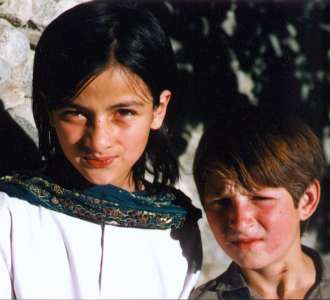 Typowo słowiańska twarz dziewczynki i rudowłosy chłopiec Hunza, który mógłby uchodzić za Irlandczyka (całkowicie biała skóra).
Typowo słowiańska twarz dziewczynki i rudowłosy chłopiec Hunza, który mógłby uchodzić za Irlandczyka (całkowicie biała skóra).
Dzieci Hunza są zdrowe emocjonalnie i fizycznie, gdyż wiedzą, że zajmują określone miejsce w społeczeństwie, są kochane i szanowane.
Dlatego ich energia jest ukierunkowana na konstruktywne, a nie destruktywne działania i nie ma możliwości, żeby wyrósł bandyta czy złodziej.
 Chłopcy w typie bardziej irańsko-indyjskim – R1a1
Chłopcy w typie bardziej irańsko-indyjskim – R1a1
„Cywilizowany” system wychowywania dzieci jest ogromnie stresogenny.
Rodzice są skłonni do oskarżania swoich latorośli, wyładowują na nich swoje frustracje, karzą je i strofują.
Tak samo postępuje szkoła.
Nie uczy to szacunku dla rodziców, społeczeństwa, a tym bardziej dla samego siebie.
Taki system „hoduje” jednostki podatne na stres, a tym samym na wszelkie choroby, których przyczyną są zablokowane emocje.
 Drzewa owocowe – wiśnie, jabłonie, jak u nas
Drzewa owocowe – wiśnie, jabłonie, jak u nas
Dr Hans Seyle pisze tak:
„Dopiero zaczynamy rozumieć, że wiele pospolitych chorób jest spowodowanych w większym stopniu błędami naszych reakcji przystosowawczych na stres, niż bezpośrednimi szkodami wyrządzonymi przez bakterie, trucizny lub inne czynniki zewnętrzne. W tym sensie wiele zakłóceń nerwowych i emocjonalnych, nadciśnienie, wrzody żołądka i dwunastnicy, choroby reumatyczne, sercowo – naczyniowe i nerkowe a nawet nowotwory, wydają się być przede wszystkim chorobami adaptacyjnymi. Wobec tego wszystkiego, stres jest niewątpliwie ważnym, osobistym problemem dla każdego.”
Hunzowie rozwinęli w sobie wysoce pozytywny stosunek do życia.
Obserwując ich twarze widzi się szczęśliwe uśmiechy, wyraz ufności i pewności siebie. Są wolni od skłonności do ubolewania nad przeszłością i obaw o przyszłość. Wykonują swą codzienną pracę bez napięć, stresów i nerwowości.
W Hunzie nie ma zachłanności, zawiści ani fałszu, który zatruwa myśli serca.
Myślę, że to jest prawdziwa tajemnica zdrowia plemienia Hunzów.
Oj, cywilizacjo, cywilizacjo – coś z nami zrobiła?
Hunzowie żyjący w Indiach i w Himalajach
cieszą się do końca – przeciętnie studwudziesto-, stuczterdziestoletniego – życia niezwykłym zdrowiem, tężyzną fizyczną i… płodnością.
to surowe owoce w lecie, suszone i rozmoczone w wodzie lub mleku (głównie morele) – zimą, placki z ciemnej mąki razowej bardzo krótko pieczone i zjadane bez żadnych dodatków, potrawy z rozgotowanego zboża, mleko i sery owcze, kozie i krowie, ziemniaki i pomidory, dużo słodkich migdałów, a także wytwarzany z nich olej. (Olej migdałowy jest obecnie bardzo ceniony w kosmetyce. Laboratoria renomowanych firm kosmetycznych produkują z niego odżywcze kremy przeciwzmarszczkowe.)
Jak widać, w menu Hunzów nie ma mięsa.
Obecnie naukowcy już wiedzą, dlaczego sposób odżywiania Hunzów dawał długowieczność, a dieta Birchera – leczyła chorych i była świetną profilaktyką dla tych, u których jeszcze nie wystąpiły zmiany chorobowe. Otóż okazało się, że produkty stanowiące podstawę obu diet są m.in. źródłem substancji zapobiegających chorobom serca, miażdżycom i starzeniu się mózgu (zbyt duża ilość tłuszczu zwierzęcego przytłumia sprawność umysłową!).
Już dwa jabłka i 100 gramów orzechów (patrz: „surówka piękności”) dostarczają organizmowi 3 mg boru (górna granica niezbędnej dziennej dawki), który jest rzadkim pierwiastkiem, śladowo występującym w pokarmach. Jego niedobór znacznie obniża sprawność umysłową.
Zawarta w orzechach tiamina, ma – poza innymi funkcjami – podobne działanie na mózg, jak bor. Najwięcej tego pierwiastka śladowego jest w orzechach i migdałach, warzywach strączkowych, liściastych (np. w brokułach), jabłkach, gruszkach, brzoskwiniach, winogronach, także w miodzie.
Poza tym diety te dostarczają odpowiednią ilość witaminy C, niezbędną by aminokwas – fenyloalanina, zawarty w migdałach, ważnym składniku diety Hunzów i Birchera, mógł wziąć udział w procesach, dzięki którym jesteśmy spokojni, zrównoważeni, syci już po niewielkim posiłku, błyskotliwi i płodni.
Chleb (Czapati):
Chleb Hunzów (Czapati) jest zdrowy, nierafinowany, może nawet za gruby, niedelikatny, ale za to pełen wartościowych składników pokarmowych.
Chleb Hunza zawiera wszystkie składniki pokarmowe pełnego ziarna. Może właśnie z tego względu Hunzowie cieszą się taką żywotnością i mają silne do późnego wieku nerwy, ponieważ do każdego posiłku jedzą tego chleba dużo. Może dlatego też mężczyźni mający dziewięćdziesiąt lat zostają ojcami, a kobiety pięćdziesięcioletnie matkami.
Chleb czapati, jak u nas w latach 60-tych XX wieku, na wsi – z brytfanki
Czapati, które jest podstawą diety Hunzów, robione jest z pszenicy, jęczmienia, gryki lub mąki z prosa. Jest bogate w fosfor, potas, żelazo, wapń, magnez i inne minerały, ponieważ w czasie przygotowywania mąki z pszenicy nic nie zostaje odrzucone ani zniszczone.
Kawałek czapati z kilkoma morelami jest dla każdego Hunzy posiłkiem kompletnym, razem z kilkoma szklankami ich zimnego lodowcowego mleka (wody).
 Dzisiaj obowiązuje tutaj Islam – jak w całym Pakistanie i Bośni – ale nie obce są im tradycje buddyjskie, znana jest Weda i hinduizm. Odebrano im samodzielność i autonomię bo są zwolennikami Indii.
Dzisiaj obowiązuje tutaj Islam – jak w całym Pakistanie i Bośni – ale nie obce są im tradycje buddyjskie, znana jest Weda i hinduizm. Odebrano im samodzielność i autonomię bo są zwolennikami Indii.
Mleko:
Mleko używa się za pokarm kompletny i używa się go w rozmaity sposób. Takie produkty, jak masło, mleko i ser wyrabia się przeważnie z mleka koziego i należą one do przysmaków.
Maślankę lub lassi popija się w czasie posiłków. Bardzo popularny jest jogurt.
Warzywa:
W codziennej diecie Hunzów warzywa odgrywają rolę doniosłą. Uprawiają je dokładnie, jak my, ale jadają głównie w postaci surowej. Gotowanie ograniczają z powodu małej ilości opału.
Uprawiają szpinak, sałatę, marchew, groch, rzepę, dynię, młode liście różnych ziół oraz nasiona strączkowe. Używanie ziół do gotowania i do sałatek jest zwyczajem upowszechnionym, a bardzo lubiana jest herbata ziołowa. Często jada się ziemniaki i rzodkiewki.
Gdy gotują warzywa, robią to w zakrytym garnku, tak że światło nie niszczy ich wartości odżywczych, Ta metoda jest podobna raczej do naszego duszenia niż do gotowania. Ogień utrzymuje się mały, co powoduje, że jedzenie gotuje się we własnym sosie, nie trzeba potem dolewać wody. Wody w ogóle dodaje się bardzo niewiele i po ugotowaniu podaje się razem z jarzynami albo wypija, ale nigdy nie wylewa. W ten sposób straciłoby się fosfor, wapń, żelazo, jod i wiele innych, cennych substancji odżywczych, których brak odczuwają nasze organizmy, a które wzbogaciłyby tylko wiaderko na odpadki.
Hunzowie warzywa po prostu tylko obmywają z ziemi i zjadają surowe (najczęściej) lub gotują w skórce. Nigdy nie wyciskają ze swoich warzyw soków Anie nie skrobią skórki, tak jak my to robimy. Skóra zawiera cenne sole mineralne, niektórych niektórych z nich brakuje w soku oraz w warzywach grubo skrobanych lub obieranych. Ponadto, oprócz skrobania warzyw i obierania owoców, gotujemy nasze pokarmy w wysokiej temperaturze i wtedy ulega zniszczeniu większość cennych składników. W miarę upływu czasu, jadając takie pokarmy, pozbawiamy nasze ciało niezbędnych składników odżywczych, które są mu potrzebne do zachowania zdrowia.
Sałatki:
Sałatki są istotną częścią każdego posiłku, podaje się je na półmisku z przyprawą octu winogronowego i z morelowym olejem, tak aby każdy mógł dobierać sobie tyle, ile chce.
Różne warzywa i ich połączenia pokrojone na sałatkę zawsze są świeżo wyrwane z ogrodu.
Podaje się również warzywa w całości.
Mięso:
Hunzowie nie są wegetarianami. Jednak mięso naprawdę rzadko gości na ich stole!
Mięso jest zazwyczaj przyrządzane w postaci duszonej (gulaszu). Zostaje pokrojone i zmieszane z warzywami, nakryte szczelnie i zostawione na ogniu tak długo, aż zmięknie.
Do zupy dodaje się utartą pszenicę i proso. Dla odmiany do gulaszu dodaje się ryż.
Jajka w Hunzie uważane są za luksus.
 Dziewczynki w drodze do szkoły. Mają chusty jak wiejskie kobiety w Małopolsce – jeszcze w latach 60-tych XX wieku.
Dziewczynki w drodze do szkoły. Mają chusty jak wiejskie kobiety w Małopolsce – jeszcze w latach 60-tych XX wieku.
Owoce:
W Hunzie w wielkich ilościach rosną jabłka, gruszki, brzoskwinie, morele, czarne i czerwone wiśnie i morwy.
Morele jada się surowe w lecie i suszone na słońcu w miesiącach zimowych. Nawet pestki z moreli są wyjmowane, rozbijane i ich jądro zjadane. Są one smaczne i widocznie bardzo pożywne oraz zdrowe. Jeszcze inny pokarm został odkryty w tej pestce, mianowicie olej, używany przez Hunzów w dużych ilościach.
Hunzowie rzadko kiedy gotują swoje owoce. Jadają je surowe takie, jakie zrywa się z drzewa.
Bardzo cenione przez Hunzów, obok moreli, są bogate w witaminy i składniki mineralne brzoskwinie.
Znakomitymi owocami są także wiśnie, ponieważ korzenie drzew wiśniowych sięgają głęboko do wody i wydobywają stamtąd wiele minerałów i elementów śladowych, które potem znajdują się w owocach.
Wiśnie
Wiśnie są bogate w żelazo i działają krwiotwórczo.
Gruszki, podobnie jak jabłka, pochodzą z Azji Mniejszej i Wschodniej Europy.
Mają działanie dezynfekujące i ściągające ze względu na zawartość kwasu taninowego oraz wielu innych soli mineralnych włącznie z potasem.
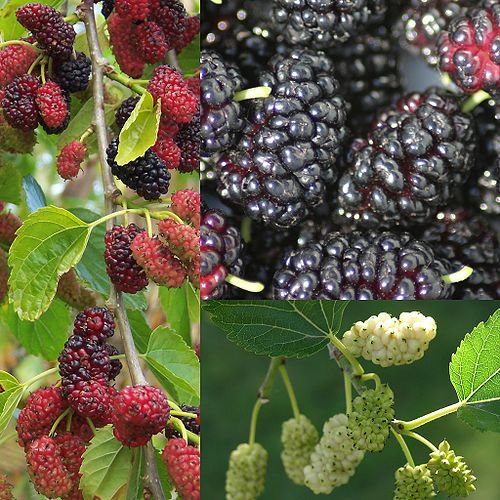 Owoce morwy czarnej i białej, są jeszcze czerwone. W latach 50-tych XX wieku w Polsce masowo sadzono morwy. Komuniści myśleli, że uda się u nas hodowla jedwabników, ale było zdecydowanie za zimno. Ostatniego lata jadłem owoce morwy z drzew w Parku im. Dr Jordana w Krakowie.
Owoce morwy czarnej i białej, są jeszcze czerwone. W latach 50-tych XX wieku w Polsce masowo sadzono morwy. Komuniści myśleli, że uda się u nas hodowla jedwabników, ale było zdecydowanie za zimno. Ostatniego lata jadłem owoce morwy z drzew w Parku im. Dr Jordana w Krakowie.
Winogrona są bogate w cukier i żelazo. W Europie wiele kuracji i wiele sanatoriów opiera się na diecie winogronowej, kiedy nie je się nic oprócz winogron – ze znakomitym rezultatem. W winogronach jest mało białka, a za to dużo witamin i substancji mineralnych.
Wino:
Hunzowie piją obficie świeże, domowe wino zrobione z winogron, które zostawia się do sfermentowania na 90 dni przed użyciem.
Ponieważ jest ono dosyć mocne, więc kto chce pozostać trzeźwy, wystarczy mu jedna szklanka.
Robi się je bez cukru, fermentuje naturalnie i tak jak owoce i warzywa jest zawsze świeże i pyszne
Co stanowi sekret zdrowia i długowieczności Hunzów?
Na pewno składa na to wiele czynników, poczynając od czystego , świeżego powietrza, czy oddalenia od cywilizacji. Hunzowie nie używają białej mąki, białego cukru, oczyszczonej soli , nie znana im jest w ogóle przetworzona żywność Zachodu z czekoladą , hamburgerami i coca colą na czele.
Woda spływająca z lodowców , która piją Hunzowie jest mętna od mineralnych osadów , tą wodę używają też do nawadniania ułożonych tarasami pół, wydartych z kamienistego górskiego podłoża.
Życie Hunzów jest ciężkie, pełne pracy fizycznej, wszystko wykonują ręcznie, nie mają maszyn rolniczych, nawet taczki nie są tam znane. Ludzie nie jeżdżą ale wszędzie chodzą pieszo.
Co uprawiają Hunzowie? Na ich małych poletkach królują:
pszenica, gryka, proso, jęczmień i lucerna, z warzyw uprawiają ziemniaki, groch, cebulę, buraki, marchew, pomidory i sałatę.
Na miedzach rosną drzewa, głównie to morele, orzechy, migdały, brzoskwinie, śliwki, jabłka i gruszki.
Zwierzęta hoduje się tylko użyteczne: kozy, owce, jaki. Mleko i jego przetwory je się bardzo często natomiast mięso raz w roku!
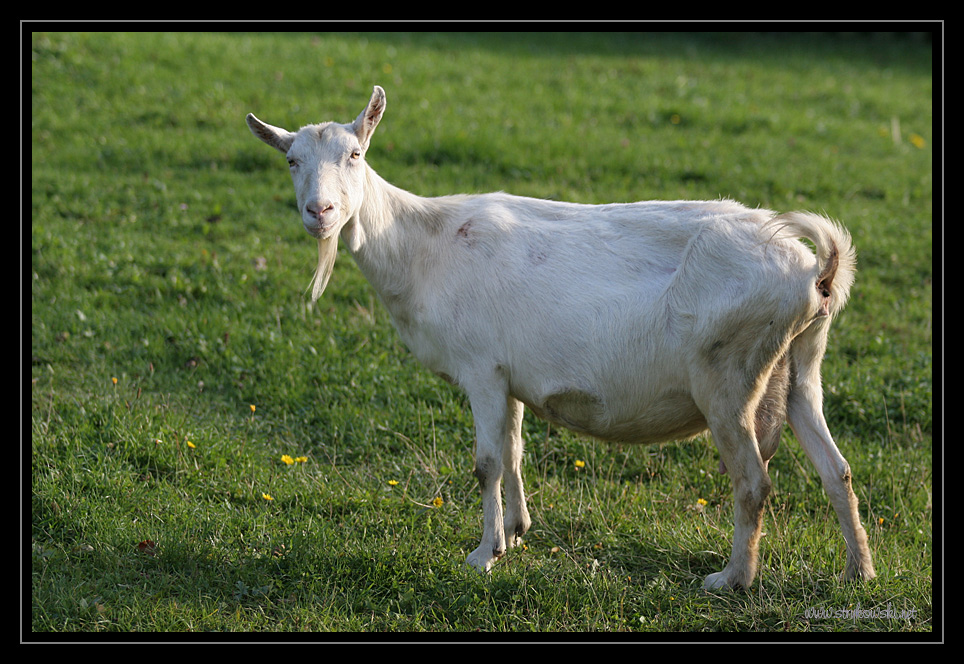
Żadnych zwierząt nie hoduje się na rzeź. Gdy zwierzę, już nie może pracować na swoje utrzymanie to zabija się je i spożywa.
To co ważne , to to, że owoce i warzywa je się głównie na surowo, gdyż opału jest bardzo mało,
Rzadko się piecze razowy chleb, głównie przygotowuje się placki z razowej mąki i je się świeże lub surowe morele, z tłuszczu stosuje się głównie olej z pestek moreli. Miodu Hunzowie nie znają ,gdyż nie ma tam pszczół.
Wprawdzie Hunzowie pracują na polu od rana do wieczora ale prowadzą racjonalny tryb życia, praca jest przerywana co parę godzin na posiłki a spać chodzą już o 20.00.
Ich religia to Islam. Hunzowie to przyjacielscy ludzie, nigdy się nie śpieszą, mają zawsze czas na pogawędkę z sąsiadami. Nie ma wśród nich osób otyłych ,nie spotyka się tam kamicy żółciowej, chorób krążenia, nadciśnienia, zaburzeń umysłowych, raka, reumatyzmu , cukrzycy i wielu innych chorób.
Nie ma też tam głodu, niemowlęta są dokarmiane mlekiem matki nawet do 3 lat.
Mało liczebny lud Hunzowie, zamieszkujący od wieków jedną z wysoko położonych dolin zachodnich Himalajów, gdzie stworzył własną, oryginalną kulturę – jeszcze przed paroma dziesiątkami lat był całkowicie odizolowany od reszty świata. W opisie pradawnego sposobu życia tego ludu znajdujemy zadziwiające fakty. Otóż pola Hunzów nie były w stanie dostarczyć im tyle pożywienia, by mieli je przez cały rok. W tej sytuacji aż do czerwca, kiedy dojrzewa gryka, lud Hunzów całymi tygodniami pościł; posty te niekiedy przeciągały się aż do dwóch miesięcy w roku. W tym okresie Hunzowie byli jednak radośni i zadowoleni, a nadto wykonywali swoją najważniejszą pracę w roku: uprawiali pola i naprawiali zasypane zimowymi lawinami kanały nawadniające. Hunzowie nie znali lekarza i nie potrzebowali policji. Ich życie toczyło się zgodnie z prawami natury.
Dziś Hunzowie żyją w pełnym kontakcie ze światem. Mężczyźni służą w wojsku, a niektórzy z nich pracują w głębi kraju. Do odizolowanej niegdyś doliny sprowadza się trwałe artykuły spożywcze: cukier, białą mąkę i konserwy; lud Hunza „nie musi” już głodować, ale za to mieszkańców doliny zaczęły trapić typowe choroby cywilizacyjne: próchnica zębów, zapalenie wyrostka robaczkowego, schorzenia dróg żółciowych, nadwaga, przeziębienia, cukrzyca i wiele innych, których wcześniej nie znali. Hunzowie potrzebują obecnie nie tylko lekarza, ale i policjanta, gdyż została zakłócona ich równowaga fizyczna i psychiczna.
Nic więc dziwnego, że wielu myślicieli, uczonych, filozofów, lekarzy przywiązywało dużą wagę do postów, głodówek, umartwień ciała jako środków służących dobrze człowiekowi i zdrowiu jego ciała i duszy.
Poniższy artykuł pochodzi z 58 numeru Nexusa.
Strona internetowa jego wydawcy to www.nexus.media.pl
Ich e-mail to // nexus@nexus.media.pl
Adres poczty elektronicznej jest chroniony przed robotami spamującymi. W przeglądarce musi być włączona obsługa JavaScript, żeby go zobaczyć.
Telefon do nich to 85 653 55 11
I TY MOŻESZ ZOSTAĆ HUNZĄ
Dariusz Klimaczak
Chcesz dożyć setki w pełni zdrowia i władz umysłowych? Bierz przykład z Hunzów!
Zapewne wielu ludzi ma takie marzenia. Ale już większość zdaje sobie sprawę, że w tym wieku pozbawieni już będą wszelkich przyjemności, no może poza oglądaniem seriali w telewizji. Ale tylko w grubych okularach… W naszym kraju na imprezach urodzinowych często solenizantom śpiewa się Sto lat! Przeżycie całego wieku w polskich warunkach to rzeczywiście wyczyn. Co nalezy zrobić, aby to się udało?
Polska starość
Dokładnie 1 stycznia 2007 roku w Ostródzie zmarła najstarsza Polka – Benadykta Mackiełło. W maju ubiegłego roku, podczas swoich 113.urodzin wyznała, że trochę boi się tej długowieczności. Nie ma się czemu dziwić, w Europie to wiek naprawdę sędziwyi nie bez powodu można się go obawiać. Nie oszukujmy się starość w wydaniu polskim, a także europejskim, to wiek klęski, i to prawie na każdym polu. Cóż z tego, że podkreśla się wyjątkową pogodę ducha i poczucie humoru takich wiekowych jubilatów, skoro są to często jedyne przymioty, które im pozostały…
Polska starość wielokrotnie pozbawiona jest godności, szara, smutna, beznadziejna. Składa się na to wiele czynników, nie tylko ekonomicznych. Bo zdrowie podupada, bo władze umysłowe juz nie najlepsze, bo pogłębiająca się z roku na rok samotność, spotęgowana z odchodzeniem z tego świata rówieśników, spycha tak wiekową osobę na margines życia. A ten margines w naszym kraju nie wygląda najlepiej, do tego jeszcze źle się kojarzy.
Co zrobić, by końcówkę życia uczynić szczęśliwszą? Sprawa wydaje się trudna, a nawet beznadziejna. Mamy szansę na dożycie późnego wieku, pod warunkiem jednak, że już teraz zaczniemy coś robić ze swoim życiem. Jesli powielimy schemat swoich rodziców i dziadków, czeka nas niestety stetryczała starość. W chorobie smutku, a często w biedzie i samotności.
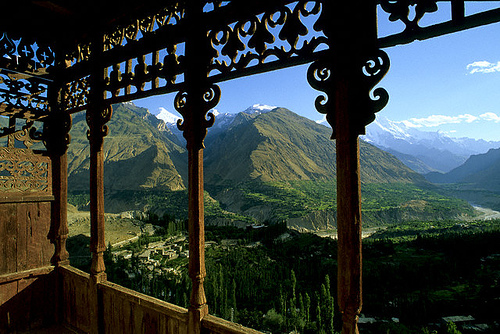 Widok z ganku. Czy ten styl nie jest bliski góralskiego, czyli harskiego (białochorwackiego i chorwackiego)?
Widok z ganku. Czy ten styl nie jest bliski góralskiego, czyli harskiego (białochorwackiego i chorwackiego)?
Legendy
Światowy rekord długowieczności (tak, odnotowuje się takie przypadki) nalezy do Francuzki Jeanne Calment, która przeżyła dokładnie 122 lata i 164 dni. Odeszła z tego świata dziesięć lat temu. To dane oficjalne, potwierdzone jej matryką. Obecnie, najstarszą kobietą świata jest 114 letnia Amerykanka Edna Parker (ur. 20 IV 1883 roku). Przejęła ten tytuł 13 VIII 2007 roku po śmierci Japonki Yone Minagawy. Najstarszym żyjącym mężczyzną jest również mieszkaniec Japonii Tomoji Tanabe (ur. 18 IX 1895 roku), ktory mimo swego sędziwego wieku ma się dobrze.
Tyle oficjalne dane. A co z nieoficjalnymi? Z tymi wszystkimi anonimowymi starcami z puszcz, gór, tajg, żyjącymi zdala od cywilizacji, metryk i urzędów? Krążą o nich legendy mniej lub bardziej prawdopodobne. Mówi się o 130-letnich Gruzinach, jeszcze starszych Ekwadorczykach, Abchazach i Uzbekach, ale namacalnych dowodów, choćby w postaci urzędowych metryk, nikt na oczy nie widział. Dlatego te opowieści o wyjątkowo długim życiu najczęściej traktowane są z przymrużeniem oka, jak wymarzone mity, niemożliwe do zrealizowania. legendy, które prędzej czy póxniej odkładane są między bajki.
Właściwie, pisząc o długowieczności, należałoby zacząć od innej, biblijnej legendy. Mówi się, że człowiek może żyć anwet tysiąc lat. Że komórki naszego ciała wytrzymałyby taki okres, pod warunkiem, że zapewniłoby się im odpowidnie warunki – zdrowe odżywianie, ruch na świeżym powietrzu, brak nałogów, stresu itp. itd. Przykładem jest Matuzalem , który według Starego Testamentu dozył 969 lat! Postać tego najstarszego ze starców występuje w Księdze Rodzaju, rozdział 5, wersy 21-27. Długowieczność Matuzalema weszła na stałe do języka potocznego, stając się synonimem bardzo póxnej starości. Jednak wiek tan kwestionowany jest przez sceptyków, którzy uważają, że to typowy czeski błąd, polegający na mylnym tłumaczeniu Biblii (zamiast lat chodziło podobno o miesiące). Według nich jego niebotyczny wiek należałoby podzielić przez 12 i uzyskany wynik (około 78) odpowiadałby rzeczywistemu wiekowi starca, notabene ojca Noego – tego od potopu.
Druga rzecz, długowieczność naszych odległych przodków może być, a nawet jest prawdopodobna,zważywszy na inne od współczesnych realia ekologiczne. Woda z pewnością była czystsza, tlenu w powietrzu było o wiele więcej niż teraz, a pełny chleb nie stanowił rarytasu, był daniem powszechnym i ze wszech miar normalnym. To jeden poziom. Drugi to rozwój cywilizacji, która – co by nie mówić – wiele rzeczy uprościła, dążąc do ułatwienia ludziom życia. Niestety nie ma nic za darmo. Przyniosła ze sobą modyfikowaną genetycznie żywność, skażenie środowiska, nadmierne zaludnienie. Za Matuzalema nie było też wyścigu szczurów, kapitalizmu i wielu innych „skracaczy” życia. Biorąc te rzeczy pod uwagę, wydaje się możliwe, że starożytni rzeczywiście żyli długo.
Siedem lat
W tym momencie zaczyna się bajka. Włsściwie powinienem zacząć tak: Za górami, za lasami, w odległym, trudno dostępnym państwie żyją mężczyźni, którzyw w ieku 90 lat zostają ojcami. Nie jest to bynajmniej zasługa viagry, ale wyjątkowej krzepy i tężyzny fizycznej wynikającej w prostej linii z szeroko pojętego zdrowia. Ojcowie tych mężczyzn, w zdecydowanej większości już dobrze po setce, spotykają się w elitarnym klubie sportowym, do którego tacy młodzicy, jak ich dzieci, nie mają wstępu. Jeżdżą na koniach, grają w coś w rodzaju europejskiego polo, podczas gdy ich żony, bywa, że starsze od najstarszych starców, przygotowują z uśmiechami na ustach proste dania z produktów, które właśnie mają pod ręką.
Cóż to za dziwna kraina, zapytacie. Czy ona rzeczywiście istnieje? Tak, jak najbardziej. U podnóża Himalajów, na terenie dzisiejszego Pakistanu dwa kilometry nad poziomem morza jest państewko Hunzów. Odkryte zostało prze tak zwany cywilizowany świat na początku XX wieku dzięki wyprawie angielskiego lekarza Roberta McCarrisona, który badał różne grupy etniczne na terenie Azji, szukając recepty na choroby spowodowane złym odżywianiem. Tak trafił do Królestwa Hunza. Zdziwiony niezwykłą żywotnością tych prostych ludzi został z nimi aż siedem lat, obserwując z coraz większą fascynacją ich życie.
Do jakich wniosków doszedł? Hunzowie nie jedzą „trzech białych trucizn”: cukru, soli i jasnego chleba. Ich posiłki są proste. Jedzą, by zaspokoić głód, a nie delektować się smakiem potraw. Spożywają dużo surowych warzyw i owoców, najczęściej w postaci sałatek okraszanych olejem z pestek moreli. Z ziaren codziennie pieczą podpłomyki, które z powodzeniem zastępują chleb, dostarczając organizmowi naturalnych mikroelementów, oleju i błonnika.
Dolina odcięta jest od świata, więc siłą rzeczy Hunzowie są skazani na jedzenie tego, co jest w zasięgu ręki. Z racji ciężkich warunków, zwierząt prawie tam nie ma, a nawet gdyby były, brakowałoby pastwisk do ich wypasania. Nie znaczy to, że Hunzowie unikają mięsa. Jedzą je rzadko, kiedy nadarza się okazja. Piją również wino, a właściwie ledwo co sfermentowany sok owocowy, oczywiście w granicach rozsądku. Nie uświadczysz tam pijaka, bo to ludzie pracowici, a alkoholowy nałóg odciąga od zajęć, zaprzątając niepotrzebnie głowę.
Fort w Baltit (Bałtycie)
Świadomość
Jak widać, nie samo jedzenie wpływa na długowieczność Hunzów, ale także, a może głównie, ich stosunek do życia. Szanują je pod każdą postacią, starając się we wszystkim działać zgodnie z naturą. Srogie warunki zycia zmusiły ich do zawarcia pokoju z przyrodą opartego na wzajemnym szacunku i poważaniu. Wysoce rozwinięta świadomość u tych prostych ludzi zadziwiła angielskiego lekarza i zadziwia wszystkich, którzy mieli szczęście być w ich krainie. A dostać się tam nie jest łatwo. Nie docierają tam samoloty ani samochody, większość drogi pokonuje się pieszo, a trzeba pamiętać, że to podnóże Himalajów. mało tego – żeby przekroczyć granicę tego państewka, potrzebna jest zgoda pakistańskich władz oraz osobiste zaproszenie króla Hunzów. Tak, maja króla, ale nie jest to władca w stylu europejskim mieszkający w pałacu i otoczony dworem. Najczęściej glową państwa zostaje najbardziej szanowany członek starszyzny, która i tak decyduje o najważniejszych sprawach kraju. Król jest tylko jednym z nich, a jego zycie niczym nie rózni się od życia zwykłego obywatela. Taką demokrację w najczystszym wydaniu czuć na każdym kroku. Hunzowie pracują do późnej starości i często odchodzą z tego świata w trakcie pracy. Działanie dla dobra wspólnego uważają za coś naturalnego. Pomagają sobie nawzajem, mając świadomość,m że szczęście każdego z osobna przekłada się na szczęście wszystkich. Pieniądze są u nich praktycznie nieznane, wzelkie transakcje odbywają się na zasadzie handlu wymiennego. „Wymaruję ci płotek, a ty w zamian wstawisz mi okna”. nie liczą na emeryturę (nie znają nawet takiego pojęcia), bo nie mają od czego odpoczywać. Życie ich nie męczy, a praca jest dla nich sensem życia. Nie wyobrażają sobie bezczynności ani lenistwa.
Zgniły Zachód
Hunzowie żyją skromnie, według zachodnich kryteriów nawet poniżej dolnej granicy ubóstwa, a mimo to są szczęśliwi. Zadziwiające, prawda? Wydaje się, że cała tajemnica leży w prostocie. Jedzą prosto, żyją prosto, reguły ich życia również są proste. Co ciekawe, nie ma tam wojska, policji ani żadnych służb porządkowych. Młodzi wychowywani są w poszanowaniu tradycji i starszych. Dzieci obdarzane są miłością nie tylko rodziców, ale całej społeczności, co owocuje tym, że czują się akceptowane, odpłacając tym samym innym. Nie dotarły tam żadne zdobycze cywilizacji, a nawet jeśli docierają, Hunzowie nie są nimi zbytnio zainteresowani.
Jakże inaczej wszystko wygląda na Zachodzie! Trudo oprzeć się wrażeniu, że człowiek Zachodu zyje głupio i głupio umiera. Czasami też głupio się rodzi…
Pracujemy po to, żeby zdobyć pieniądze na utrzymanie domu i rodziny. Często w stresie, nienawidząc szefa i swojego zajęcia. Starość, czyli emerytura, jawi nam się jako upragniony raj bez obowiązków, odpowiedzialności i napięcia. Niestety, wyniszczający system, który zmusza nas – ludzi Zachodu – do ciągłej gonitwy, czyni z emeryta odpad społeczeństwa. Odpad bezproduktywny, bezużyteczny i wypalony. Starość zamiast nieść ze sobą spokój ducha i pogodzenie się z upływającym czasem staje się przedsionkiem śmierci.
Czego możemy nauczyć się od Hunzów? Z pewnością odpowiedniego wartościowania. Ci prości górale mają poukładane w głowach i sercach od pokoleń. Pielęgnują te przekonania, w naturalny sposób osiągając taki stan ducha, o jakim marzą medytujący latami Europejczycy. Obronili się przed cywilizacją, zachowując odrębne wartości, jakże inne od przyjętych w większości miejsc na Ziemi. Z przecież żyją na tej samej planecie, co my. Oddychają tym samym tlenem, mają podobną do nas krew, a ich mózgi nie różnią się zasadniczo od naszych. po raz kolejny trzeba tu wspomnieć o prostocie – jedzenia, odczuwania i życia, które jest dla nich bezcennym darem, a świat krainą szczęśliwości. Krainą, ktlora istnieje od zawsze tu i teraz. trzeba tylko umieć to dostrzec. Głównie w sobie.
Hunza
– dawne księstwo muzułmańskie znajdujące się na obszarze dzisiejszego Pakistanu.
Hunza obejmowało obszar 10,101 km², jego stolicą był Karimabad.
Hunza powstało w XIV wieku w północno-wschodniej części dzisiejszego Kaszmiru. W 1889 przyjęło narzucony przez Brytyjczyków protektorat. W 1947 znalazł się w części Kaszmiru zajętej przez Pakistan, gdzie otrzymał status autonomicznego księstwa. Z powodu silnych nastrojów proindyjskich w księstwie, zostało ono zlikwidowane 25 września 1974.
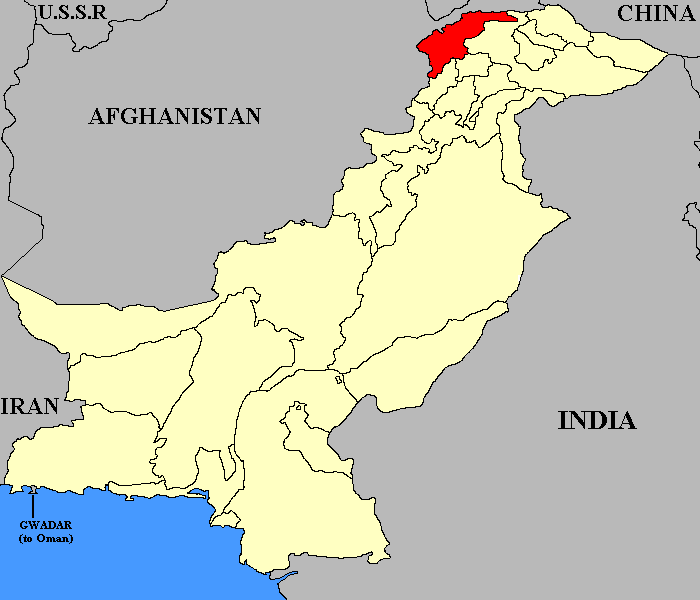 Kraj Hunzów graniczy z Krajem Kalaszów o których już chyba pisałem jako o potomkach R1a1 – Scyto-Sako-Słowianach? Chyba gdzieś w artykułach o zimie w Królestwie SIS? Tam poszukajcie. W każdym razie mamy tutaj zarówno Krainę Lodu (Ladakh), Karakorum – Czarne Hory Czaropanów, sam kary Karimabad jak i Bałtystan i Nurystan, a także Górę Kalasz – Niepokalaną – Świętą Górę Tybetu i buddyzmu oraz hinduizmu, a więc i wedyzmu – czyli Wiary Przyrodzonej wszystkich Ariów.
Kraj Hunzów graniczy z Krajem Kalaszów o których już chyba pisałem jako o potomkach R1a1 – Scyto-Sako-Słowianach? Chyba gdzieś w artykułach o zimie w Królestwie SIS? Tam poszukajcie. W każdym razie mamy tutaj zarówno Krainę Lodu (Ladakh), Karakorum – Czarne Hory Czaropanów, sam kary Karimabad jak i Bałtystan i Nurystan, a także Górę Kalasz – Niepokalaną – Świętą Górę Tybetu i buddyzmu oraz hinduizmu, a więc i wedyzmu – czyli Wiary Przyrodzonej wszystkich Ariów.
Książęta Dir Salim Chan II
- ??? Szach Sultan Khan
- 1710 – ? Shahbaz Chan
- ??? Shahbeg Chan
- ~1750 – 1790 Shah Kisro Chan
- 1790 Mirza Chan
- 1790 – 1825 Salim Chan III
- 1825 – 1864 Ghazanfur Chan
- 1864 – 1886 Mohammad Ghazan Chan I
- 1886 – 1892 Safdar Ali Chan
- 1892 – 1938 Mohammad Nazim Chan
- 1938 – 1946 Mohammad Ghazan Chan II
- 1946 – 1974 Mohammad Jamal Chan
Oraz
http://www.absoluteastronomy.com/topics/Haplogroup_R1a_%28Y-DNA%29
Encyclopedia
Haplogroup R1a is a major Y-chromosome haplogroup currently found at high frequencies in most of Eastern Europe
Eastern Europe
Eastern Europe is a region lying in the Eastern part of Europe. The term is highly context-dependent and there are „almost as many definitions of Eastern Europe as there are scholars of the region”…
and parts of Central
Central Europe
Central Europe is the region lying between the variously defined areas of Eastern and Western Europe. The term and widespread interest in the region itself came back into fashion after the end of the Cold War, which, along with the Iron Curtain, had divided Europe politically into East and West,…
and Northern Europe
Northern Europe
Northern Europe is the northern part or region of Europe. The United Nations defines Northern Europe as including the following countries and dependent regions:** ** ** Ireland** Svalbard and Jan Mayen** ** Channel Islands: and…
, as well as in certain populations in Central
Central Asia
Asia is a region of Asia from the Caspian Sea in the west to central China in the east, and from southern Russia in the north to northern India in the south. It is also sometimes known as Middle Asia or Inner Asia, and is within the scope of the wider Eurasian continent.Various definitions of its…
South Asia
South Asia, also known as Southern Asia, is the southern region of the Asian continent, which comprises the sub-Himalayan countries and, for some authorities , also includes the adjoining countries on the west and the east…
.
Subclades
- R1a (defined by having the mutation SRY1532.2 also known as SRY10831.2)
- R1a*
* (haplogroup)
In human genetics, an asterisk in a person’s genealogical DNA test result indicates that they are a member of a particular haplogroup, but not of a currently classified subclade…
-
- R1a1 (M17, M198)
- R1a1*
- R1a1 (M17, M198)
* (haplogroup)
In human genetics, an asterisk in a person’s genealogical DNA test result indicates that they are a member of a particular haplogroup, but not of a currently classified subclade…
(Dubious Linking of Unrelated Sources)
-
-
- R1a1a (M56)
- R1a1b (M157)
- R1a1c (M64.2, M87, M204) One case was found in Southern Iran out of 117 people tested.
-
By far the most common clade within this family of clades is R1a1*, in other words cases of men with mutations M17 and M198, but not M56, M157, etc. R1a*, without the M17 mutation is also widespread, but far less common.
Significantly, found 22.8% R1a*, out of 57 people tested from the Saharia tribe of Madhya Pradesh
Madhya Pradesh
Madhya Pradesh , often called the Heart of India, is a state in central India. Its capital is Bhopal. Madhya Pradesh was originally the largest state in India until November 1, 2000 when the state of Chhattisgarh was carved out…
. Other examples include Northern Iran (1 case out of 33 tests), Crete (1 case of R1a(xM198) out of 193 tests), and Greek Macedonia.
The sub-clades of R1a1 all seem to relatively unusual although it should be kept in mind that not all surveys test for the full range of mutations which define these sub-clades.
It should be noted that the phylogenetic naming used in this article will change. Although it has not yet used much in published surveys, a fuller survey of known mutations has led to the ISOGG phylogenetic tree to be updated as follows:
- R1a (L62, L63)
- R1a*
- R1a1 (SRY1532.2 also known as SRY10831.2)
- R1a1*
* (haplogroup)
In human genetics, an asterisk in a person’s genealogical DNA test result indicates that they are a member of a particular haplogroup, but not of a currently classified subclade…
-
-
- R1a1a (M17, M198)
- R1a1a**
- R1a1a (M17, M198)
-
* (haplogroup)
In human genetics, an asterisk in a person’s genealogical DNA test result indicates that they are a member of a particular haplogroup, but not of a currently classified subclade…
Distribution
R1a has been found in high frequency at both the eastern and western ends of its core range, for example in India
India
India, officially the Republic of India , is a country in South Asia. It is the seventh-largest country by geographical area, the second-most populous country, and the most populous democracy in the world. Bounded by the Indian Ocean on the south, the Arabian Sea on the west, and the Bay of Bengal…
among certain central and south Asian ethnic groups, and in the Ukraine
Ukraine
Ukraine is a country in Eastern Europe. It is bordered by Russia to the east; Belarus to the north; Poland, Slovakia, and Hungary to the west; Romania and Moldova to the southwest; and the Black Sea and Sea of Azov to the south. The city of Kiev is both the capital and the largest city of…
.
Central Asia
There are big differences in R1a frequency between populations in Central Asia.
Exceptionally high frequencies of M17 are found among the Ishkashimi (68%), the Tajik population of Khojant
Khujand
Khujand , also transliterated as Khudzhand, , formerly Khodjend or Khodzhent until 1936 and Leninabad until 1991, is the second-largest city of Tajikistan. It is situated on the Syr Darya River at the mouth of the Fergana Valley. The population of the city is 149,000 , down from 160,000 in 1989…
(64%), and the Kyrgyz
Kyrgyz
The Kyrgyz are a Turkic ethnic group found primarily in Kyrgyzstan.-Etymology:There are several etymological theories on the ethnonym „Kyrgyz.”…
(63%), but are likely „due to drift, as these populations are less diverse, and are characterized by relatively small numbers of individuals living in isolated mountain valleys.” (The frequency of the Tajik/Dushanbe population is, at 19%, far lower than the 64% frequency of the Tajik/Khojant population.)
Haplogroup R1a is also common among Mongolic
Mongolic languages
The Mongolic languages are a group of languages spoken in Central Asia, notably including Mongolian.Mongolic is sometimes grouped with Turkic and Tungusic as part of the larger Altaic family….
– and Turkic
Turkic languages
The Turkic languages constitute a language family of some thirty languages, spoken by Turkic peoples across a vast area from Eastern Europe and the Mediterranean to Siberia and Western China, and are considered to be part of the proposed Altaic language family.Turkic languages are spoken by some…
-speaking populations of Northwestern China
Northwestern China
Northwestern China includes the autonomous regions of Xinjiang and Ningxia and the provinces of Shaanxi, Gansu, and Qinghai.-Administrative divisions:ProvincesAutonomous Region-See also:*Ma clique*Tangut…
, such as the Bonan
Bonan
The Bonan people are an ethnic group living in Gansu and Qinghai provinces in northwestern China…
, Dongxiang
Dongxiang people
The Dongxiang people are one of 56 ethnic groups officially recognized by the People’s Republic of China…
, Salar
Salar
Salar people are a Turkic people. Their language belongs to the Oghuz group, along with the Turkish language and Turkmen language….
, and Uyghur
Uyghur people
The Uyghur are a Turkic ethnic group living in Eastern and Central Asia. Today Uyghurs live primarily in the Xinjiang Uyghur Autonomous Region in the People’s Republic of China….
peoples.
note that Turkish and Azeri populations are atypical among Altaic speakers R1a1-M17 haplotypes.
Northeast Asia
R1a male lineages are also found scattered in significant amounts extending out of these central areas. It has been found as far East as Siberia
Siberia
Siberia , is the vast region constituting almost all of Northern Asia and for the most part currently serving as the massive central and eastern portion of the Russian Federation, having served in the same capacity previously for the USSR from its beginning, and the Russian Empire beginning in the…
, where a native presence have been found in Kamchatka and Chukotka
Chukotka
Chukotka may refer to:*Chukchi Peninsula, the northeastern extremity of Asia in the northern part of the Russian Far East*Chukotka Autonomous Okrug, a federal subject of Russia located on that peninsula*2509 Chukotka, an asteroid…
, for example 22% amongst the Itel’man. (One R1a-M17 was even found in a sample of 21 Guaymi
Guaymí
The Guaymí or Ngäbe are an indigenous group living mainly within the Ngöbe-Buglé comarca in the Western Panamanian provinces of Veraguas, Chiriquí and Bocas del Toro, as well as in the indigenous town of Conte, Costa Rica near the extreme southern tip of the country. Guaymí is the traditional term…
from Costa Rica
Costa Rica
Costa Rica, officially the Republic of Costa Rica is a country in Central America, bordered by Nicaragua to the north, Panama to the east and south, the Pacific Ocean to the west and south and the Caribbean Sea to the east.Costa Rica, which translates literally as „Rich Coast”, constitutionally…
.)
South Asia
In South Asia high levels have been observed in some populations. For example, in the eastern and northern parts of India
India
India, officially the Republic of India , is a country in South Asia. It is the seventh-largest country by geographical area, the second-most populous country, and the most populous democracy in the world. Bounded by the Indian Ocean on the south, the Arabian Sea on the west, and the Bay of Bengal…
, among the high caste Bengalis from West Bengal
West Bengal
West Bengal is a state in eastern India. With Bangladesh, which lies on its eastern border, the state forms the ethno-linguistic region of Bengal. To its northeast lie the states of Assam and Sikkim and the country Bhutan, and to its southwest, the state of Orissa…
like Brahmin
Brahmin
Brahmins have historically been the class of educators, scholars and preachers in Hinduism. They are considered as belonging to the „forward castes” of the four varnas of Hinduism….
s and Kshatriya
Kshatriya
Kshatriya is one of the four varnas in Hinduism. It constitutes the military and ruling order of the traditional Vedic-Hindu social system as outlined by the Vedas and the Laws of Manu…
s (72%), Uttar Pradesh
Uttar Pradesh
Uttar Pradesh , [often referred to as U.P.] is a state located in the northern part of India. With a population of over 190 million people,…
Brahmins (67%), Bihar
Bihar
Bihar is a state in eastern India. Bihar is the 12th largest state in terms of geographical size at 38,202 sq mi , and 3rd largest by population. Close to 85 percent of the population lives in villages…
Brahmins (60%), Punjab
Punjab (India)
Punjab is a state in northwest India. The Indian state borders the Pakistani province of Punjab to the west, Jammu and Kashmir to the north, Himachal Pradesh to the northeast, Haryana to the south and southeast and Rajasthan to the southwest. The total area of the state is 50,362 square kilometres…
(47%), and Gujarat
Gujarat
Gujarat is the westernmost state in India. It is home to the Gujarati speaking people of India. The state encompasses major sites of the Indus Valley Civilization such as Lothal and Dholavira. Gujarat played an important role in the economic history of India throughout the history of India…
(33%) of male lineages have been observed in this lineage. It is also found in relatively high frequencies in several South Indian Dravidian-speaking tribes including the Chenchu
Chenchu
The Chenchus are an aboriginal tribe of the central hill regions of Andhra Pradesh, India. Their traditional way of life has been based on hunting and gathering. In general, the Chenchu relationship to nontribal people has been largely symbiotic…
and Valmikis of Andhra Pradesh
Andhra Pradesh
Andhra Pradesh , abbreviated A.P., is a state situated on the south-eastern coast of India. It is India’s fourth largest state by area and fifth largest by population. Its capital and largest city is Hyderabad…
and the Kallar of Tamil Nadu
Tamil Nadu
Tamil Nadu is one of the 28 states of India. Its capital and largest city is Chennai . Tamil Nadu lies in the southernmost part of the Indian Peninsula and is bordered by Puducherry , Kerala, Karnataka and Andhra Pradesh…
suggesting that M17 is widespread in tribal southern Indians.
Western Asia
The M17 marker is found in five to ten percent of Middle Eastern men. This is true even in some western Iranian populations where Persian
Persian language
Persian is an Iranian language within the Indo-Iranian branch of the Indo-European languages. It is widely spoken in Iran, Afghanistan, Tajikistan, Uzbekistan and to some extent in Iraq and Bahrain, and has a status of official language in the first three countries under different names…
, a major Indo-European
Indo-European
Indo-European may refer to:* Indo-European languages** Aryan, a 19th century term for Indo-European speakers.* Proto-Indo-European language, the reconstructed common ancestor of all Indo-European languages….
language with close relatives in high frequency areas in Central and South Asia, is spoken. However, on the Eastern side of Iran, around 35% of men carry the M17 maker. suggest that the deserts of central Iran acted as „significant barriers to gene flow,” and propose two possibilities:
on high frequency of rare R1-M173* and R1a-SRY1532 lineages in Iran.http://content.karger.com/ProdukteDB/produkte.asp?Aktion=ShowPDF&ArtikelNr=93774&ProduktNr=224250&filename=93774.pdf
Central and Eastern Europe
In Europe, R1a is found primarily in the eastern part of the European continent, with the highest frequencies among the Sorbs
Sorbs
Sorbs also known as Wends, Lusatian Sorbs or Lusatian Serbs, are a Slavic people settled in Lusatia, a region on the territory of Germany and Poland.Sorbs are divided into two groups:…
(63.39%), Poles (56.4%), , Russians (50.0%) and Ukrainians (54.0%). An early study reported an R1a frequency of 60.0% among a sample of 45 Hungarians, but a later study found haplogroup R1a Y-DNA in only 20.4% of a sample of 113 Hungarians. Another early study from 2000 has reported finding haplogroup R1a1-SRY1532b in approximately 22% (8/36) of a Hungarian sample. A study first published in December 2008 has found haplogroup R1a1a-M17 in approximately 57% of a sample of 53 Hungarians.
The Balkans
Balkans
The Balkans is a geopolitical and cultural region of southeastern Europe…
shows lower frequencies, and significant variation between areas, for example >30% in Slovenia
Slovenia
Slovenia , officially the Republic of Slovenia , is a country in Central Europe bordering Italy to the west, the Adriatic Sea to the southwest, Croatia to the south and east, Hungary to the northeast, and Austria to the north…
, Croatia
Croatia
Croatia , officially the Republic of Croatia , is a country in southeast Europe, at the crossroads of the Pannonian Plain, the Balkans, and the Mediterranean Sea. Its capital is Zagreb…
and Greek Macedonia, but <10% in Albania
Albania
Albania , officially the Republic of Albania , is a Mediterranean country in South Eastern Europe. It is bordered by Montenegro to the north, Kosovo to the northeast, Macedonia to the east and Greece to the south-east…
, Kosovo
Kosovo
Kosovo is a disputed territory in the Balkans. Its majority is governed by the partially-recognised Republic of Kosovo , a self-declared independent state which has de facto control over the territory; the exceptions are some Serb enclaves…
and parts of Greece
Greece
Greece , officially the Hellenic Republic , is a country in southeastern Europe, situated on the southern end of the Balkan Peninsula….
..
Among the earliest indications of the presence of R1a in Europe
Europe
Europe is, by convention, one of the world’s seven continents. Comprising the westernmost peninsula of Eurasia, Europe is generally divided from Asia to its east by the water divide of the Ural Mountains, the Ural River, the Caspian Sea, the Caucasus Mountains , and the Black Sea to the southeast…
are remains of three individuals from a set of multiple burials near Eulau, Saxony-Anhalt
Saxony-Anhalt
Saxony-Anhalt is one of the sixteen Bundesländer that make up the Federal Republic of Germany. It has an area of , and a population of 2.45 million…
, Germany
Germany
Germany , officially the Federal Republic of Germany , is a country in Central Europe. It is bordered to the north by the North Sea, Denmark, and the Baltic Sea; to the east by Poland and the Czech Republic; to the south by Austria and Switzerland; and to the west by France, Luxembourg, Belgium,…
, discovered in 2005. Y-DNA extracted from the remains of the individuals, buried together following a likely raid by unknown pillagers in roughly 2600 BC
BC
BC or B.C. may refer to:* Before Christ, from the Latin Ante Christum, an epoch based on the traditionally reckoned year of the conception or birth of Jesus.-Places:* Baja California, Mexico’s northernmost state…
, established that four of the individuals killed were a father, his two children and the mother of those children. The father and the two male children proved to be of the R1a haplogroup. The Eulau find, hailed by archaeologists and geneticists as „providing the oldest genetic evidence of a nuclear family,” also demonstrated the spread of R1a among the Corded Ware culture
Corded Ware culture
The Corded Ware culture, alternatively characterized as the Battle Axe culture or Single Grave culture is an enormous European archaeological horizon that begins in the late Neolithic , flourishes through the Copper Age and finally culminates in the early Bronze Age, developing in various areas…
peoples into what is now Central Europe
Central Europe
Central Europe is the region lying between the variously defined areas of Eastern and Western Europe. The term and widespread interest in the region itself came back into fashion after the end of the Cold War, which, along with the Iron Curtain, had divided Europe politically into East and West,…
.
Northern Europe
There is a significant presence in Scandinavia
Scandinavia
Scandinavia is a geographical region in northern Europe that includes, and is named after, the Scanian Province. It consists of the kingdoms of Norway, Sweden, and Denmark…
, for example in Norway
Norway
Norway , officially the Kingdom of Norway, is a country in Northern Europe occupying the western portion of the Scandinavian Peninsula, as well as Jan Mayen and the Arctic archipelago of Svalbard under the Spitsbergen Treaty…
, whence branches seem to have moved still further west, to Britain
Great Britain
Great Britain is an island lying to the northwest of Continental Europe. It is the ninth largest island in the world, and the largest European island. With a population of about 59.6 million people, it is the third most populated island on Earth. Great Britain is surrounded by over 1000 smaller…
with the Vikings. In Iceland
Iceland
The Republic of Iceland is a European island country located in the North Atlantic Ocean. It has a population of about 320,000 and a total area of 103,000 km². Its capital and largest city is Reykjavík, whose surrounding area is home to approximately two thirds of the national population…
, for instance, R1a accounts for nearly a quarter of the local male Y-DNA.
It is likely that Viking
Viking
A Viking is one of the Norse explorers, warriors, merchants, and pirates who raided and colonized wide areas of Europe from the late eighth to the early eleventh century. These Norsemen used their famed longships to travel as far east as Constantinople and the Volga River in Russia, and as far…
s or Normans
Normans
The Normans were the people who gave their names to Normandy, a region in northern France. They descended from Viking conquerors of the territory and the native population of mostly Frankish and Gallo-Roman stock…
, Viking descendants, settling in Britain, Scotland and to a lesser degree Ireland, carried the R1a lineage, which accounts for the small presence of the haplogroup on those islands.
Southern Europe
In Southern Europe R1a is not normally common but it is widespread and found in significant pockets. found significant levels in the Pas Valley in Northern Spain
Spain
Spain , officially the Kingdom of Spain , is a country located in southwestern Europe on the Iberian Peninsula.The Spanish constitution does not establish any official denomination of the country, even though España , Estado español and Nación española are used interchangeably…
, and also the areas of Venice
Venice
Venice is a city in northern Italy, the capital of the region Veneto, a population of 271,367 . Together with Padua, the city is included in the Padua-Venice Metropolitan Area . The city historically was an independent nation…
, and Calabria
Calabria
Calabria , in antiquity known as Bruttium, is a region in southern Italy, south of Naples, located at the „toe” of the Italian peninsula. It is bounded to the north by the region of Basilicata, to the south-west by the region of Sicily, to the west by the Tyrrhenian Sea, and to the east by the…
in Italy
Italy
Italy , officially the Italian Republic , is a country located on the Italian Peninsula in Southern Europe and on the two largest islands in the Mediterranean Sea, Sicily and Sardinia. Italy shares its northern, Alpine boundary with France, Switzerland, Austria and Slovenia…
.
 Rudowłosy to obecny prezydent Hunzów, pozbawionych autonomii przez Pakistańczyków za sprzyjanie Hindusom. Obok pakistański minister i dyplomata.
Rudowłosy to obecny prezydent Hunzów, pozbawionych autonomii przez Pakistańczyków za sprzyjanie Hindusom. Obok pakistański minister i dyplomata.
Origins
R1a’s origins remain disputed. It presumably originated somewhere in the Eurasia
Eurasia
Eurasia is a large landmass covering about 52,990,000 km2 or about 10.6% of the Earth’s surface…
n landmass, where it is most commonly found today. There are two focuses of high frequency of R1a, one in South Asia
South Asia
South Asia, also known as Southern Asia, is the southern region of the Asian continent, which comprises the sub-Himalayan countries and, for some authorities , also includes the adjoining countries on the west and the east…
, near North India
North India
North India is a loosely defined region in the northern part of India. The exact meaning of the term varies by usage. The dominant geographical features of North India are the Indo-Gangetic Plain and the Himalayas, which demarcate the region from Tibet and Central Asia…
, and the other in Eastern Europe
Eastern Europe
Eastern Europe is a region lying in the Eastern part of Europe. The term is highly context-dependent and there are „almost as many definitions of Eastern Europe as there are scholars of the region”…
, in the area of the Ukraine
Ukraine
Ukraine is a country in Eastern Europe. It is bordered by Russia to the east; Belarus to the north; Poland, Slovakia, and Hungary to the west; Romania and Moldova to the southwest; and the Black Sea and Sea of Azov to the south. The city of Kiev is both the capital and the largest city of…
. On the one hand, the highest frequency level observed in any large population so far has been found in some South Asian groups. On the other hand it has been claimed that the highest diversity is measured in the Balkans
Balkans
The Balkans is a geopolitical and cultural region of southeastern Europe…
and that Indian R1a appears to be an offshoot of European R1a.
Central Asian Origin Theories
argued, citing data from , , and that…
Eastern European Origin Theories
Suggestions have been made which associate the distribution of R1a with several proposed movements of people in history and prehistory in Eastern Europe
Eastern Europe
Eastern Europe is a region lying in the Eastern part of Europe. The term is highly context-dependent and there are „almost as many definitions of Eastern Europe as there are scholars of the region”…
–
- The spread from a Ukrainian refugium during the Late Glacial Maximum
- The spread of Indoeuropean languages and/or Indo-Aryan languages
Indo-Aryan languages
The Indo-Aryan languages are a branch of the Indo-European language family.SIL International in a 2005 estimate counted a total of 209 varieties, the largest in terms of native speakers being Hindustani , Bengali , Punjabi , Marathi ,…
and/or Indo-Iranian languages
Indo-Iranian languages
The Indo-Iranian language group constitutes the easternmost extant branch of the Indo-European family of languages. It consists of three language groups: the Indo-Aryan, Iranian and Nuristani. The term Aryan languages is occasionally still used to refer to the Indo-Iranian languages…
in the Bronze Age
Bronze Age
The Bronze Age of a culture is the period when the most advanced metalworking in that culture utilised bronze. This could either have been based on the local smelting of copper and tin from ores, or trading for bronze from production areas elsewhere…
(also associated with the use of horses).
- The spread of Slavic languages
Slavic languages
The Slavic languages , a group of closely related languages of the Slavic peoples and a subgroup of Indo-European languages, have speakers in most of Eastern Europe, in much of the Balkans, in parts of Central Europe, and in the northern part of Asia.-Branches:Scholars traditionally divide Slavic…
and migrations in late Classical times.
These three proposals involve very different time periods, but they are not mutually exclusive given that R1a lineages may have been taken part in many different human movements over time in the same geographical region.
In favour of an early dispersal from Europe, suggested that R1a expanded from the area of the Dniepr-Don Valley
Don Valley
-Canada:*The Don River valley in Toronto and York Region in Ontario, after which are named:**Don Valley East, a federal and provincial electoral district**Don Valley West, a federal and provincial electoral district…
in the Ukraine
Ukraine
Ukraine is a country in Eastern Europe. It is bordered by Russia to the east; Belarus to the north; Poland, Slovakia, and Hungary to the west; Romania and Moldova to the southwest; and the Black Sea and Sea of Azov to the south. The city of Kiev is both the capital and the largest city of…
between 13,000 and 7,600 years ago, after the Last Glacial Maximum
Last Glacial Maximum
The Last Glacial Maximum refers to the time of maximum extent of the ice sheets during the last glacial period, approximately 20,000 years ago. This extreme persisted for several thousand years. It is followed by the Late Glacial Maximum….
receded. This was based on data showing highest levels of R1a STR
Microsatellite
Microsatellites, or Simple Sequence Repeats , are polymorphic loci present in nuclear and organellar DNA that consist of repeating units of 1-6 base pairs in length. They are typically neutral, co-dominant and are used as molecular markers which have wide-ranging applications in the field of…
diversity in the Ukraine.
Spencer Wells
Spencer Wells
Spencer Wells is a geneticist and anthropologist, an at the National Geographic Society, and Frank H.T. Rhodes Visiting Professor at Cornell University…
(2002), similarly postulated southern Russia/Ukraine as the likely origin of R1a1 on the basis of both microsatellite
Microsatellite
Microsatellites, or Simple Sequence Repeats , are polymorphic loci present in nuclear and organellar DNA that consist of repeating units of 1-6 base pairs in length. They are typically neutral, co-dominant and are used as molecular markers which have wide-ranging applications in the field of…
diversity and frequency distribution. He enlarged on the correlation of R1a with the expansion of the Kurgan
Kurgan hypothesis
The Kurgan hypothesis is one of the proposals about early Indo-European origins, which postulates that the people of an archaeological „Kurgan culture” in the Pontic steppe were the most likely speakers of the Proto-Indo-European language…
people.
propose two dates of expansion, suggesting that the spread of R1a from a point of origin in Ukraine
Ukrainian LGM refuge
-Introduction:The Late Glacial Maximum is defined primarily by climates in the northern hemisphere warming substantially causing a process of accelerated deglaciation following the Last Glacial Maximum…
following the Last Glacial Maximum
Last Glacial Maximum
The Last Glacial Maximum refers to the time of maximum extent of the ice sheets during the last glacial period, approximately 20,000 years ago. This extreme persisted for several thousand years. It is followed by the Late Glacial Maximum….
may have been magnified by the expansion of males from the Kurgan culture area of present-day southern Ukraine, from where, according to Gimbutas proposals
Kurgan hypothesis
The Kurgan hypothesis is one of the proposals about early Indo-European origins, which postulates that the people of an archaeological „Kurgan culture” in the Pontic steppe were the most likely speakers of the Proto-Indo-European language…
, Indo-European languages
Indo-European languages
The Indo-European languages are a family of several hundred related languages and dialects, including most major languages of Europe, Iran, and northern India, and historically also predominant in Anatolia and Central Asia…
spread.
Other authors have focused on the Balkan region, further west, as an area which shows signs of having a very ancient R1a population, even though modern frequency levels are not as high as other places. A high-resolution Y chromosome analysis by shows a maximum diversity of R1a STR variance among Croatians and Bosnians
Bosnians
Bosnians are people who reside in, or come from, Bosnia and Herzegovina. By the modern state definition a Bosnian can be anyone who holds citizenship of the state. This includes, but is not limited to, members of the constituent ethnic groups of Bosnia and Herzegovina: Bosniaks, Serbs and Croats…
and the authors remark:
The most recent proponent of a Balkan origin is Anatole Klyosov. Not only does he also believe that the R1a1 genetic diversity there looks older, but he has also written that the „current Indian R1a1 haplotypes are practically indistinguishable from Russian, Ukrainian, and Central Asian R1a1 haplotypes, as well as from many West and Central European R1a1 haplotypes.”
Also recently, a Bronze Age
Bronze Age
The Bronze Age of a culture is the period when the most advanced metalworking in that culture utilised bronze. This could either have been based on the local smelting of copper and tin from ores, or trading for bronze from production areas elsewhere…
European origin for R1a1 in at least parts of Asia has also been argued on the basis of a 2009 study of DNA results from Andronovo culture
Andronovo culture
The Andronovo culture, or Sintashta-Petrovka culture is a collection of similar local Bronze Age cultures that flourished ca. 2300–1000 BCE in western Siberia and the west Asiatic steppe. It is probably better termed an archaeological complex or archaeological horizon…
remains in South Siberia. The Y DNA was almost exclusively R1a1 This archaeological culture
Archaeological culture
In addition to its usual meaning in social science, in archaeology, the term culture is also used in reference to several related concepts unique to the discipline.-Archaeological culture:…
, has also been genetically studied in Kazakhstan
Kazakhstan
Kazakhstan , officially the Republic of Kazakhstan, is a country situated in Eurasia that is ranked as the ninth largest country in the world. It is also the world’s largest landlocked country. Its territory of 2,727,300 km² is greater than Western Europe…
, and is thought to have been a carrier of an Indo-Iranian language (the same family of languages as is commonly associated with R1a in modern India) from their direction of Europe. (In particular it has been noted that their mitochondrial DNA is almost entirely of types associated with Europe, and that this Asian population appears to have had a relatively high level of red and blonde hair and blue eyes.)
Evidence that R1a was once common in areas to the west of its modern core range, and even west of the Balkans, has come from other tests on ancient samples, which appear to show that R1a was common in this region well before Slavic languages are thought to have arrived.
The spread of Slavic peoples and languages might have played a role in further increasing the frequency of R1a1 in parts of Europe. Investigation of SNP and STR markers occurring within subgroup R1a1 in the Czech Republic confirmed that the results are compatible with a presence of the gene during or soon after the LGM. Population growth beginning in the first millennium B.C. was detected. The overall diversity suggests a rapid demographic expansion beginning about 60 to 80 generations ago, which would equate to about 1500 years ago (approx. 500 AD) to 2000 years ago (approx. 1 AD) with a generation time of 25 years. Similar results have been found in Lithuania. Another study has also detected Y-STR evidence of a recent Slavic expansion from the area of modern Urkaine.
South Asian Origin Theories
Several other studies suggest R1a lineages may have their origins in North India
North India
North India is a loosely defined region in the northern part of India. The exact meaning of the term varies by usage. The dominant geographical features of North India are the Indo-Gangetic Plain and the Himalayas, which demarcate the region from Tibet and Central Asia…
. Stephen Oppenheimer
Stephen Oppenheimer
Stephen Oppenheimer , a British physician, a member of Green College, Oxford and an honorary fellow of Liverpool School of Tropical Medicine, carries out and publishes research in the field of genetics….
(2004) believes according to the Southern Coastal Migration Theory
Coastal Migration
Coastal Migration is a term sometimes used in modern anthropology and genetics for the concept that, from a single origin in Africa 100-200 thousand years before present , humanity first spread eastwards to areas outside Africa along routes that were predominantly located around coastlines…
that:
Spencer Wells
Spencer Wells
Spencer Wells is a geneticist and anthropologist, an at the National Geographic Society, and Frank H.T. Rhodes Visiting Professor at Cornell University…
(2001), noted that the Indo-European-speaking Sourashtrans, a population from Tamil Nadu in southern India, have a much higher frequency of M17 [R1a1] than their Dravidian-speaking neighbours, the Yadhavas and Kallars, adding to the evidence that M17 [R1a1] is a diagnostic Indo-Iranian marker. However Saha et al. examined R1a1 in South Indian tribals and Dravidian population groups more closely, and questioned this concept. Their analyses of the haplogroups „indicated no single origin from any lineage but a result of a conglomeration of different lineages from time to time. The phylogenetic analyses indicate a high degree of population admixture and a greater genetic proximity for the studied population groups when compared with other world populations”.
A particular interest has been taken in investigating the long-presumed connection between Indo-Aryan
Indo-Aryan
Indo-Aryan refers to:* Indo-Aryan languages* Indo-Aryan migration, a supposition that holds that the Indo-Aryans migrated to India.* Indigenous Aryans, a theory that holds that the Indo-Aryans are native to India….
origins and higher caste Brahmin
Brahmin
Brahmins have historically been the class of educators, scholars and preachers in Hinduism. They are considered as belonging to the „forward castes” of the four varnas of Hinduism….
s. Studies have generally failed to support this association. The R1a lineage forms around 35–45% among all the castes in North Indian population (Namita Mukherjee et al. 2001) and the Badagas
Badagas
The Badagas are an indigenous people inhabiting the Nilgiri Hills of Tamil Nadu, southern India. The term ‚Badagu’ in old Tamil means ‚North’, so ‚Badaga’ should mean ‚Northerner’…
of the Nilgiris
Nilgiris (mountains)
The Nilgiri , often referred to as the Nilgiri Hills, are a range of mountains with at least 24 peaks above , in the westernmost part of Tamil Nadu at the junction of Karnataka and Kerala states in Southern India…
. Sengupta et al. have confirmed R1a’s diverse presence even among Indian tribal and lower castes (the so-called untouchables) and populations not part of the caste system. Chaubey et al. draw the same conclusion that both caste and tribal populations are autochthonous to India.
Several Indian studies have pressed the case for an Indian origin for R1a and R1a1 from the diversity and distinctiveness of microsatellite
Microsatellite
Microsatellites, or Simple Sequence Repeats , are polymorphic loci present in nuclear and organellar DNA that consist of repeating units of 1-6 base pairs in length. They are typically neutral, co-dominant and are used as molecular markers which have wide-ranging applications in the field of…
Y-STR
Y-STR
A Y-STR is a short tandem repeat on the Y chromosome. Y-STRs are often designated by DYS numbers.Y-STRs are often used in genealogical DNA testing.-Databases:…
variation. Sengupta et al.(2005) concluded that there must have been an independent R1a1 population in India dating back to a much earlier expansion than the Indo-Aryan migration.
Sahoo (2006) argued from Y-chromosomal data against any major influx into the Indian subcontinent from regions north and west of India, of people associated either with the development of agriculture or the spread of the Indo-Aryan language family. On the R1a populations of North India, he noted that „one should expect to observe dramatically lower genetic variation among Indian R1a lineages. In fact, the opposite is true: the STR haplotype diversity on the background of R1a in Central Asia (and also in Eastern Europe) has already been shown to be lower than that in India . Rather, the high incidence of R1* and R1a throughout Central Asian and East European populations (without R2 and R* in most cases) is more parsimoniously explained by gene flow in the opposite direction, possibly with an early founder effect in South or West Asia”
Geneticist Toomas Kivisild
Toomas Kivisild
Toomas Kivisild, is an Estonian geneticist. He graduated in 1992 as a zoologist, and completed his Ph.D. at the Estonian Biocentre research institute. He is a professor of human evolutionary genetics at Cambridge University and his main work has focused on human mtDNA variation.Stephen…
led a study (2003) in which comparisons of the diversity of R1a1 (R-M17) haplogroup in India
India
India, officially the Republic of India , is a country in South Asia. It is the seventh-largest country by geographical area, the second-most populous country, and the most populous democracy in the world. Bounded by the Indian Ocean on the south, the Arabian Sea on the west, and the Bay of Bengal…
n, Pakistan
Pakistan
Pakistan , officially the Islamic Republic of Pakistan, is a country located at the crossroads of South Asia, the Middle East, and Central Asia…
i, Iran
Iran
Iran , officially the Islamic Republic of Iran is a country in Western Asia. The name Iran has been in use natively since the Sassanid period and came into international use from 1935, before which the country was known internationally as Persia…
ian, Central Asia
Central Asia
Asia is a region of Asia from the Caspian Sea in the west to central China in the east, and from southern Russia in the north to northern India in the south. It is also sometimes known as Middle Asia or Inner Asia, and is within the scope of the wider Eurasian continent.Various definitions of its…
n, Czech
Czech people
Czechs are a western Slavic people of Central Europe, living predominantly in the Czech Republic. Small populations of Czechs also live in Slovakia, Austria, U.S., Brazil, Argentina, Canada, Germany, Russia and other countries…
and Estonia
Estonia
Estonia , officially the Republic of Estonia , is a country in Northern Europe. It is bordered to the north by the Gulf of Finland, to the west by the Baltic Sea, to the south by Latvia , and to the east by the Russian Federation…
n populations. The study showed that the diversity of R1a1 in India, Pakistan, and Iran, is higher than in Czechs (40%), and Estonians.
Kivisild came to the conclusion that „southern and western Asia might be the source of this haplogroup”: „Haplogroup R1a, previously associated with the putative Indo-Aryan
Indo-Aryan
Indo-Aryan refers to:* Indo-Aryan languages* Indo-Aryan migration, a supposition that holds that the Indo-Aryans migrated to India.* Indigenous Aryans, a theory that holds that the Indo-Aryans are native to India….
invasion, was found at its highest frequency in Punjab






